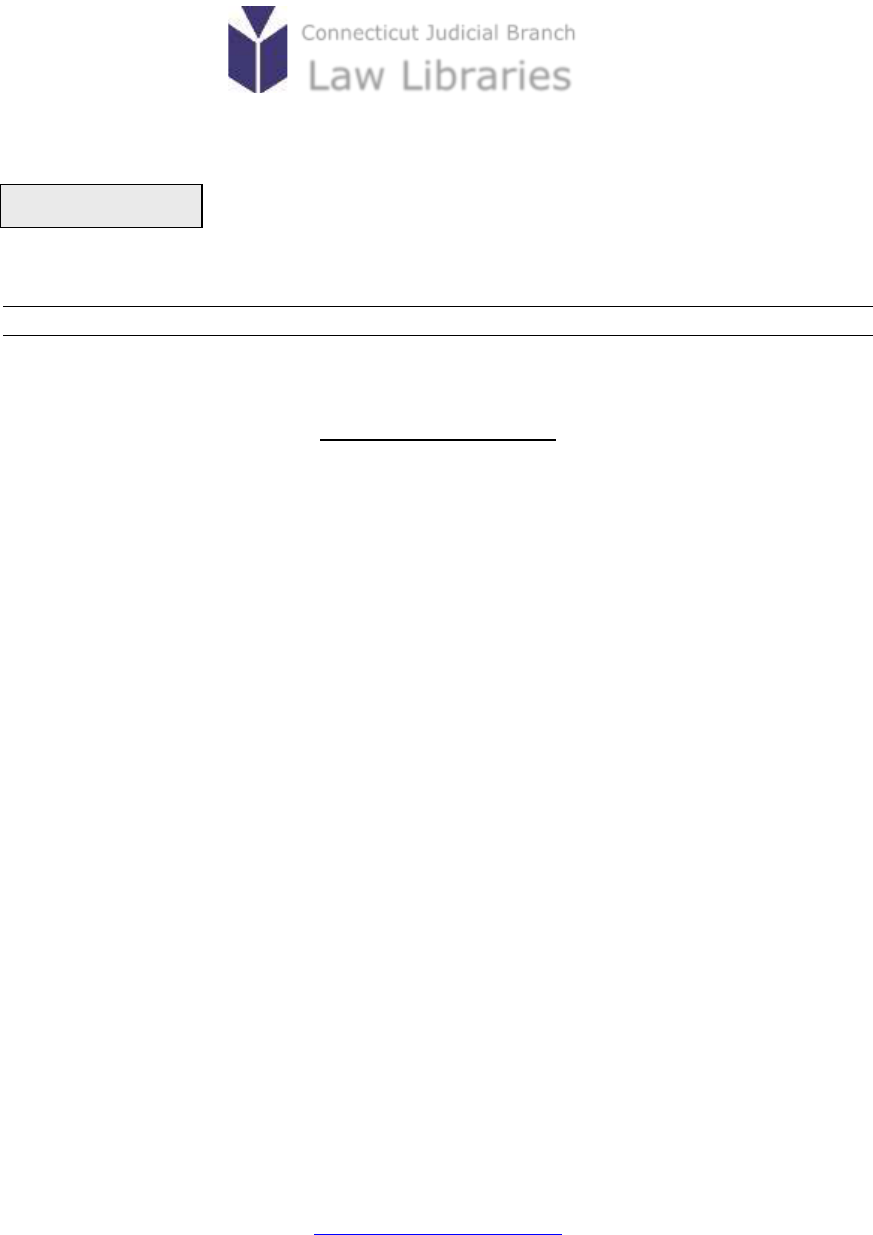
Motion for Summary Judgment - 1
Connecticut Judicial Branch
Law Libraries
Copyright © 2015-2023, Judicial Branch, State of Connecticut. All rights reserved.
Motion for Summary Judgment
A Guide to Resources in the Law Library
Table of Contents
Introduction .................................................................................................... 3
Section 1: Motion for Summary Judgment ........................................................... 4
Figure 1: Motion for Summary Judgment (Form) ............................................ 18
Table 1: Motion for Summary Judgment or Motion to Strike ............................. 20
Section 2: Objection to Motion for Summary Judgment ....................................... 22
Section 3: Affidavits and Documentary Proof ..................................................... 27
Section 4: Partial Summary Judgment .............................................................. 35
Prepared by Connecticut Judicial Branch, Superior Court Operations,
Judge Support Services, Law Library Services Unit
lawlibrarians@jud.ct.gov
2023 Edition
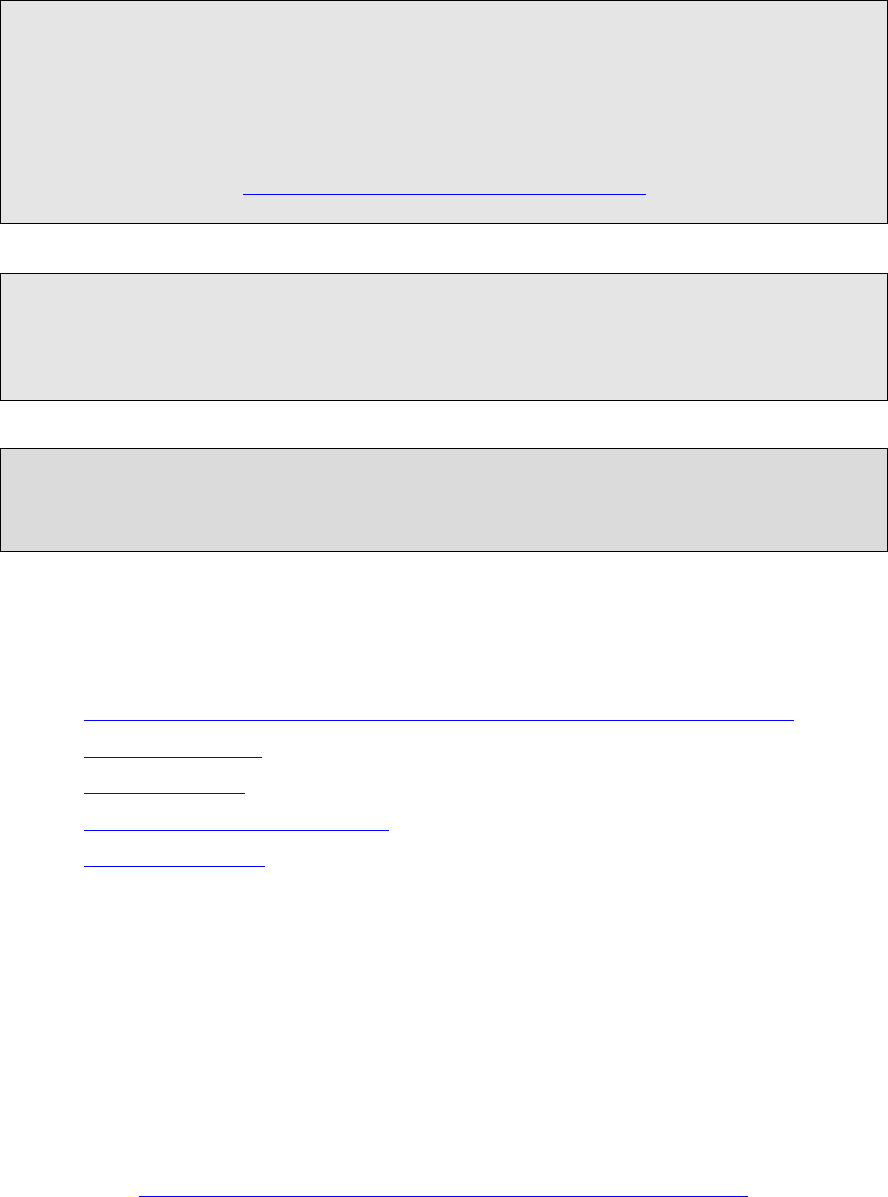
Motion for Summary Judgment - 2
These guides are provided with the understanding that they represent only a
beginning to research. It is the responsibility of the person doing legal research to
come to his or her own conclusions about the authoritativeness, reliability, validity,
and currency of any resource cited in this research guide.
View our other research guides at
https://jud.ct.gov/lawlib/selfguides.htm
This guide links to advance release opinions on the Connecticut Judicial Branch website
and to case law hosted on Google Scholar and Harvard’s Case Law Access Project.
The online versions are for informational purposes only.
References to online legal research databases refer to in-library use of these
databases. Remote access is not available.
See Also:
• Answer, Special Defense, Counterclaim and Setoff to a Civil Complaint
• Motion to Dismiss
• Motion to Strike
• Oral Argument in Civil Matters
• Request to Revise
Connecticut Judicial Branch Website Policies and Disclaimers
https://www.jud.ct.gov/policies.htm

Motion for Summary Judgment - 3
Introduction
A Guide to Resources in the Law Library
• Motion for Summary Judgment: “In any action, including administrative
appeals which are enumerated in Section 14-7, any party may move for a
summary judgment as to any claim or defense as a matter of right at any time if
no scheduling order exists and the case has not been assigned for trial. If a
scheduling order has been entered by the court, either party may move for
summary judgment as to any claim or defense as a matter of right by the time
specified in the scheduling order. If no scheduling order exists but the case has
been assigned for trial, a party must move for permission of the judicial authority
to file a motion for summary judgment. These rules shall be applicable to
counterclaims and cross complaints, so that any party may move for summary
judgment upon any counterclaim or cross complaint as if it were an independent
action. The pendency of a motion for summary judgment shall delay trial only at
the discretion of the trial judge” Conn. Practice Book § 17-44 (2023).
• Supporting Documents: “A motion for summary judgment shall be supported
by appropriate documents, including but not limited to affidavits, certified
transcripts of testimony under oath, disclosures, written admissions and other
supporting documents.” Conn. Practice Book § 17-45(a) (2023).
• Opposition to Summary Judgment: “Unless otherwise ordered by the judicial
authority, any adverse party shall file and serve a response to the motion for
summary judgment within forty-five days of the filing of the motion, including
opposing affidavits and other available documentary evidence.” Conn. Practice
Book § 17-45(b) (2023).
• Affidavits: “Supporting and opposing affidavits shall be made on personal
knowledge, shall set forth such facts as would be admissible in evidence, and
shall show affirmatively that the affiant is competent to testify to the matters
stated therein. Sworn or certified copies of all papers or parts thereof referred to
in an affidavit shall be attached thereto.” Conn. Practice Book § 17-46 (2023).
• Judgment: “The judgment sought shall be rendered forthwith if the pleadings,
affidavits and any other proof submitted show that there is no genuine issue as
to any material fact and that the moving party is entitled to judgment as a
matter of law.” Conn. Practice Book § 17-49 (2023).
• Material Fact: “is a fact which will make a difference in the result of the case.”
Hospital of Central Connecticut v. Neurosurgical Associates, P.C., 139 Conn. App.
778, 783, 57 A.3d 794 (2012).
• Partial Summary Judgment as to Liability: “A summary judgment,
interlocutory in character, may be rendered on the issue of liability alone,
although there is a genuine issue as to damages. In such case the judicial
authority shall order an immediate hearing before a judge trial referee, before
the court, or before a jury, whichever may be proper, to determine the amount of
the damages. If the determination is by a jury, the usual procedure for setting
aside the verdict shall be applicable. Upon the conclusion of these proceedings,
the judicial authority shall forthwith render the appropriate summary judgment.”
Conn. Practice Book § 17-50 (2023).
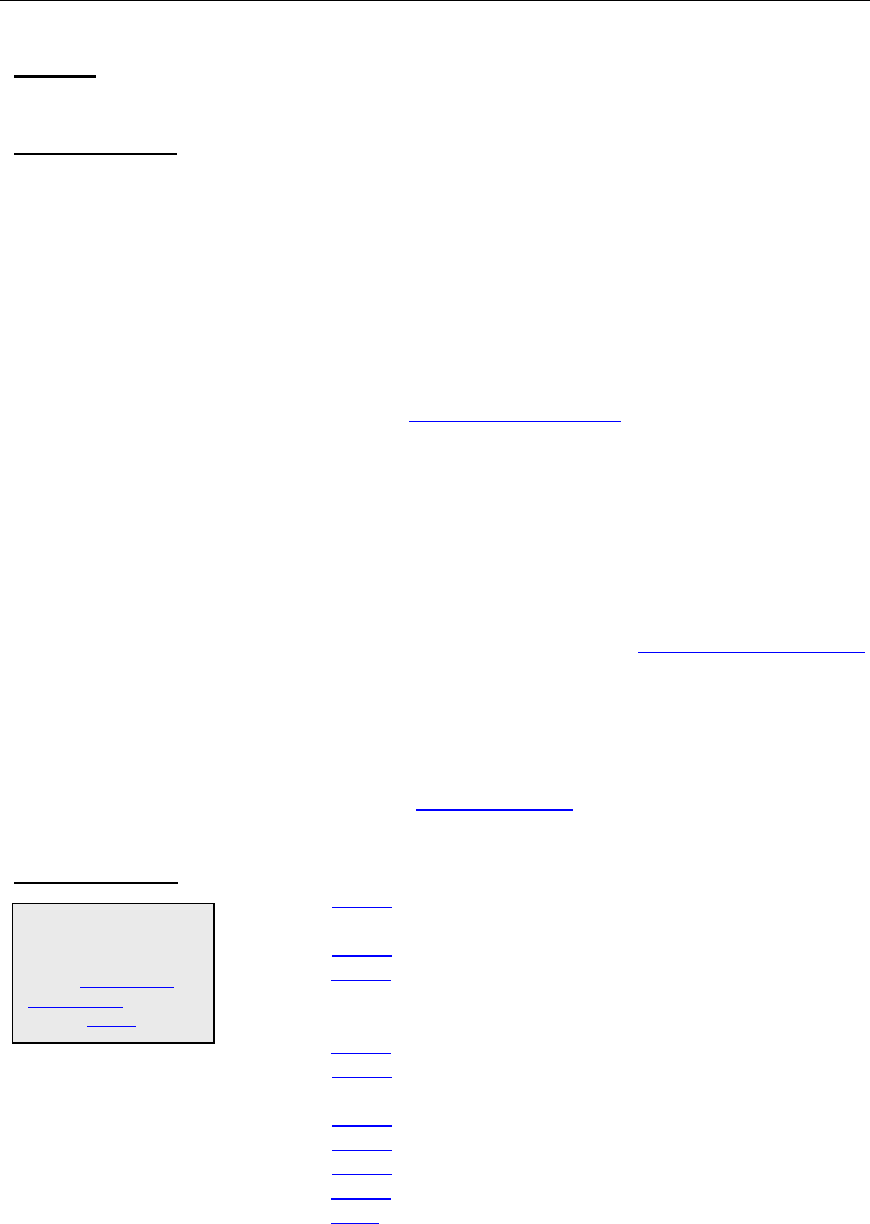
Motion for Summary Judgment - 4
Section 1: Motion for Summary Judgment
A Guide to Resources in the Law Library
SCOPE:
Bibliographic resources relating to general information on
motions for summary judgment.
DEFINITIONS:
• Summary judgment: “is a method of resolving litigation
when pleadings, affidavits, and any other proof submitted
show that there is no genuine issue as to any material fact
and that the moving party is entitled to judgment as a
matter of law….The motion for summary judgment is
designed to eliminate the delay and expense of litigating an
issue when there is no real issue to be tried....The test for
granting summary judgment is whether the moving party
would be entitled to a directed verdict on the same facts....
The test for granting summary judgment is whether the
moving party would be entitled to a directed verdict on the
same facts.” Wilson v. New Haven, 213 Conn. 277, 279,
567 A.2d 829 (1989).
• Standard of Review: “Practice Book [§ 17-49] provides
that summary judgment shall be rendered forthwith if the
pleadings, affidavits and any other proof submitted show
that there is no genuine issue as to any material fact and
that the moving party is entitled to judgment as a matter of
law.... In deciding a motion for summary judgment, the
trial court must view the evidence in the light most
favorable to the nonmoving party.” Robinson v. Cianfarani,
314 Conn. 521, 524, 107 A.3d 375 (2014).
• Trial court function: “[T]he trial court does not sit as the
trier of fact when ruling on a motion for summary
judgment.... [Its] function is not to decide issues of
material fact, but rather to determine whether any such
issues exist.” Vestuti v. Miller, 124 Conn. App. 138, 142, 3
A.3d 1046 (2010).
COURT RULES:
• Connecticut Practice Book (2023)
§ 11-10. Requirement That Memorandum of Law Be
Filed with Certain Motions.
§ 17-44. Summary Judgments; Scope of Remedy.
§ 17-45. --Proceedings upon Motion for Summary
Judgment; Request for Extension of Time to
Respond.
§ 17-46. --Form of Affidavits.
§ 17-47. --When Appropriate Documents Are
Unavailable
§ 17-48. --Affidavits Made in Bad Faith
§ 17-49. --Judgment
§ 17-50. --Triable Issue as to Damages Only
§ 17-51. --Judgment for Part of Claim
§ 19-3. Reference to Judge Trial Referee
Amendments to the
Practice Book (Court
Rules) are published
in the Connecticut
Law Journal and
posted online.

Motion for Summary Judgment - 5
FORMS:
• 2 Connecticut Practice Series, Connecticut Civil Practice
Forms, 4th ed., by Joel M. Kaye et al., Thomson West,
2004, with 2022 supplement (Also available on Westlaw).
Form 106.15. Motion for Summary Judgment
• LexisNexis Practice Guide: Connecticut Civil Pretrial Practice
Margaret P. Mason, editor, 2022 ed., LexisNexis.
§ 16.21. Form: Motion for Summary Judgment
§ 16.22. Form: Memorandum of Law in Support of
Motion for Summary Judgment
§ 16.23. Form: Affidavit in Support of Motion for
Summary Judgment
• 18 Connecticut Practice Series, Summary Judgment &
Related Termination Motions, by Erin Carlson, 2023 ed.,
Thomson West (Also available on Westlaw).
Chapter 3. Summary Judgment or Summary
Adjudication
VI. Sample Forms
§ 3:127. Sample supporting and opposition briefs
§ 3:128. Sample supporting and opposition briefs
— Motion for summary judgment by defendant —
Notice of motion for summary judgment
§ 3:129. Sample supporting and opposition briefs
— Motion for summary judgment by defendant —
Negligence action — Failure to produce evidence
of injury caused by breach of duty — Motion
§ 3:130. Sample supporting and opposition briefs
— Motion for summary judgment by defendant —
Action alleging violation of franchise act and unfair
trade practices act — Defendant not a “franchise”
within meaning of statute — Motion
§ 3:131. Sample supporting and opposition briefs
— Motion for summary judgment by defendant —
Memorandum of points and authorities in support
of motion for summary judgment — Defamation
§ 3:132. Sample supporting and opposition briefs
— Motion for summary judgment by defendant —
Memorandum of points and authorities in support
of motion for summary judgment — Negligence
action against municipal fire department
§ 3:133. Sample supporting and opposition briefs
— Motion for summary judgment by defendant —
Memorandum of points and authorities in support
of motion for summary judgment — Negligence
action against bus owner

Motion for Summary Judgment - 6
§ 3:134. Sample supporting and opposition briefs
— Motion for summary judgment by defendant —
Memorandum of points and authorities in support
of motion for summary judgment – Negligence
action against owner of premises
§ 3:135. Sample supporting and opposition briefs
— Motion for summary judgment by defendant —
Memorandum of points and authorities in support
of motion for summary judgment – Negligence
action against power company barred by res
adjudicata
§ 3:136. Sample supporting and opposition briefs
— Motion for summary judgment by defendant —
Memorandum of points and authorities in support
of motion for summary judgment – Negligence
action against water authority
§ 3:139. Sample supporting and opposition briefs
— Motion for summary judgment by defendant —
Request for judicial notice in support of motion for
summary judgment
• Library of Connecticut Collection Law Forms, Robert M.
Singer, Connecticut Law Tribune, 2016.
6. Actions for Accounting
6-012. Defendants Motion for Summary Judgment
Liquidated Damages Provision, page 275
9. Motions
9-020. Motion for Summary Judgment (plaintiff’s
motion), page 499
9-032. Motion for Summary Judgment (defendant’s
motion), page 549
11. Special Defenses
11-013. Plaintiff’s Motion for Summary Judgment—
Limitation of Liability Clause
19. Attorney Collection of Fees
19-006. Motion for Summary Judgment on
Counterclaim—Based on Statute of Limitations,
page 1133
• Civil Litigation in Connecticut: Anatomy of a Lawsuit, by
Kimberly A. Peterson, Prentice Hall, 1998.
Chapter 27. Motion for Summary Judgment
Example 3, Motion for Summary Judgment and
Memorandum of Law pp. 257-260
CASE LAW:
• Carolina Casualty Insurance Company v. Connecticut Solid
Surface LLC., 207 Conn. App. 525, 262 A.3d 885 (2021).

Motion for Summary Judgment - 7
“‘The fundamental purpose of summary judgment is
preventing unnecessary trials.... If a plaintiff is unable to
present sufficient evidence in support of an essential
element of his cause of action at trial, he cannot prevail as
a matter of law.... To avert these types of ill-fated cases
from advancing to trial, following adequate time for
discovery, a plaintiff may properly be called upon at the
summary judgment stage to demonstrate that he possesses
sufficient counterevidence to raise a genuine issue of
material fact as to any, or even all, of the essential
elements of his cause of action....
‘It is not enough ... for the opposing party merely to assert
the existence of such a disputed issue. Mere assertions of
fact ... are insufficient to establish the existence of a
material fact and, therefore, cannot refute evidence
properly presented to the court.... [T]ypically
[d]emonstrating a genuine issue requires a showing of
evidentiary facts or substantial evidence outside the
pleadings from which material facts alleged in the pleadings
can be warrantably inferred.... Only if the defendant as the
moving party has submitted no evidentiary proof to rebut
the allegations in the complaint, or the proof submitted fails
to call those allegations into question, may the plaintiff rest
upon factual allegations alone....
‘[I]ssue-finding, rather than issue-determination, is the key
to the procedure.... [T]he trial court does not sit as the trier
of fact when ruling on a motion for summary judgment....
[Its] function is not to decide issues of material fact, but
rather to determine whether any such issues exist.... Our
review of the decision to grant a motion for summary
judgment is plenary.... We therefore must decide whether
the court's conclusions were legally and logically correct
and find support in the record.’ (Citations omitted; footnote
omitted; internal quotation marks omitted.) Brown v.
Otake, 164 Conn. App. 686, 699-701, 138 A.3d 951
(2016).”
• Reilly v. Reilly, Superior Court, Judicial District of Stamford-
Norwalk at Stamford, No. FSTCV165015959S (February 21,
2018) (65 Conn. L. Rptr. 905) (2018 WL 1459933) (2018
Conn. Super. LEXIS 349). “There is no appellate authority
settling the issue of the appropriateness of a motion for
summary judgment in a probate appeal. There is a split of
authority in the Superior Courts on this issue. In numerous
decisions, Superior Court judges have determined that
summary judgment motions are appropriate in probate
appeals. . . . In other Superior Court cases, courts have
held that summary judgment is not permitted in an appeal
from probate. . . .This court adopts the reasoning of the
Once you have
identified useful
cases, it is important
to update the cases
before you rely on
them. Updating case
law means checking
to see if the cases
are still good law.
You can contact your
local law librarian to
learn about the tools
available to you to
update cases.

Motion for Summary Judgment - 8
cases which hold that a summary judgment motion is
appropriate in a probate appeal.”
• Soderburg v. Unitrin Preferred Ins. Co., Superior Court,
Judicial District of Tolland at Rockville, No. CV-166010893-
S (July 24, 2018) (2018 WL 3862230) (2018 Conn. Super.
LEXIS 1511). “For each of these three insurers, the latest
possible manifestation date was the last day of the last
policy period for which the policy was effective....The
present action commenced in 2016, more than one year
after the latest possible trigger date for these liabilities
under these policies. All three insurers utilized virtually the
same one-year limitation of action language in their
insurance contracts with the plaintiffs, and, consequently,
these three defendants are entitled to summary judgment
as a matter of law.
The motion by Covenant is denied because there exists
a genuine factual dispute concerning whether the loss,
purportedly covered by its policy, was triggered during the
relevant policy period and was the type of loss for which
Covenant is liable.”
• Kobylanska v. Northstar Condo. Ass'n, Superior Court,
Judicial District of Stamford-Norwalk at Stamford, No. CV-
146021406-S, (July 26, 2016) (62 Conn. L. Rptr. 757)
(2016 WL 4507308) (2016 Conn. Super. LEXIS 2055). “It is
unclear whether the defendant failed to apprehend the now-
identified issues in the complaint when it was first reviewed,
or whether the defendant decided, as a tactical matter, to
raise the deficiency for the first time in order to prevent the
plaintiffs from filing a substitute pleading. The Supreme
Court has considered the circumstances under which it is
appropriate to employ a motion for summary judgment in
situations where the issues might have been addressed by a
motion to strike. In Larobina v. McDonald, 274 Conn. 394,
400, 876 A.2d 522 (2005), the Supreme Court discussed at
length the differences between a motion to strike and a
motion for summary judgment. The court also noted that
the use of a motion for summary judgment instead of a
motion to strike may be unfair to the nonmoving party
because ‘[t]he granting of a defendant's motion for
summary judgment puts the plaintiff out of court . . . [while
the] granting of a motion to strike allows the plaintiff to
replead his or her case . . . With these authorities in mind,
we conclude that the use of a motion for summary
judgment to challenge the legal sufficiency of a complaint is
appropriate when the complaint fails to set forth a cause of
action and the defendant can establish that the defect could
not be cured by repleading . . . If it is clear on the face of
the complaint that it is legally insufficient and that an
opportunity to amend it would not help the plaintiff, we can
perceive no reason why the defendant should be prohibited
Once you have
identified useful
cases, it is important
to update the cases
before you rely on
them. Updating case
law means checking
to see if the cases
are still good law.
You can contact your
local law librarian to
learn about the tools
available to you to
update cases.

Motion for Summary Judgment - 9
from claiming that he is entitled to judgment as a matter of
law and from invoking the only available procedure for
raising such a claim after the pleadings are closed.’
(Citations omitted; internal quotation marks omitted.)
Larobina v. McDonald, supra, 400-02.
Accordingly, in order for the defendant to prevail in its
motion for summary judgment the court must not only
determine that allegations of the complaint are legally
insufficient, but also that affording the plaintiffs the
opportunity to replead would not help them.”
• Brown v. Otake, 164 Conn App. 686, 708, 138 A.3d 951
(2016). “According to the court's articulation, summary
judgment was warranted on the negligent
misrepresentation count because ‘[t]here were no facts
presented that showed negligent representation on the part
of these defendants.’ With respect to the count alleging
intentional misrepresentation, the court articulated that it
granted summary judgment because ‘[t]here were no facts
presented that any misrepresentations were made,
negligent or false.’ On the basis of our review of the record,
including the arguments of the parties at summary
judgment, we construe the court's ruling as holding that the
plaintiff failed to present any evidence rebutting the proof
submitted by the defendants showing that the
representations on which the plaintiff relies as
misrepresentations were never made, thereby establishing
a lack of a genuine issue of material fact on an essential
element necessary to prevail at trial on either
misrepresentation count. That conclusion is legally and
logically correct, and supported by the record. Once the
defendants presented evidence demonstrating the lack of a
genuine issue of material fact regarding the existence of a
misrepresentation of fact, the evidentiary burden shifted to
the plaintiff, and he could no longer rely solely upon the
allegations in his complaint. To survive summary judgment,
the plaintiff needed to marshal some evidence countering
that submitted by the defendants, and it was not the
court's responsibility to search the evidentiary record
provided by the moving party on his behalf. Having failed to
present any evidence himself or to reference any portion of
the evidence submitted by the defendants, the plaintiff
failed to meet his burden. Accordingly, we conclude that the
court properly granted summary judgment on the
misrepresentation counts as a matter of law.”
• Ramos v. J.J. Mottes Co., Superior Court, Judicial District of
Hartford, CV 09-6006373-S (December 1, 2015) (61 Conn.
L. Rptr. 329) (2015 WL 9595342) (2015 Conn. Super.
LEXIS 2949). “Because a party may now file a motion for
summary judgment even before the pleadings are closed, a
party no longer must plead a time limitation as a special
Once you have
identified useful
cases, it is important
to update the cases
before you rely on
them. Updating case
law means checking
to see if the cases
are still good law.
You can contact your
local law librarian to
learn about the tools
available to you to
update cases.

Motion for Summary Judgment - 10
defense prior to moving for summary judgment. ‘If [the
court] were to hold that a motion for summary judgment
cannot be made prior to pleading a statute of limitations as
a special defense, [the court] would negate that portion of
§[17-44] that provides that a motion for summary
judgment can be made “at any time,” without the necessity
of closing the pleadings.’ (Footnote omitted.) Girard v.
Weiss, 43 Conn. App. 397, 416, 682 A.2d 1078, cert.
denied, 239 Conn. 946, 686 A.2d 121 (1996). ‘When there
is no such material fact in dispute or where there is
agreement of the parties as to every relevant fact, we
conclude that the pleadings need not be closed in order to
move for summary judgment.’ Id., 417. In Girard, the court
held that since the parties did not disagree as to the facts,
the trial court could properly consider the motion for
summary judgment. Id.”
• Glencore, Ltd. v. Winkler, Superior Court, Judicial District of
Stamford-Norwalk, No. CV 13-5014052-S, (Aug. 11, 2015),
(60 Conn. L. Rptr. 806) (2015 WL 5315410) (2015 Conn.
Super. LEXIS 2107). “Essentially as a tautology, a motion
for summary judgment is intended to lead to a ‘judgment.’
The court is unaware of any general authority in
Connecticut for using the summary judgment procedure to
eliminate a defense separate from consideration of the
merits of the claim to which it is claimed to be applicable
(as opposed to rendering judgment in favor of a defendant
based on a defense)—deleting a defense but without
issuance of any order coming with the scope of the concept
of ‘judgment.’ Thus, Practice Book § 17–49, relating to the
consequences of a successful motion for summary
judgment, provides: ‘The judgment sought shall be
rendered forthwith if the pleadings, affidavits and any other
proof submitted show that there is no genuine issue as to
any material fact and that the moving party is entitled to
judgment as a matter of law.’ A judgment can enter on a
successful motion for summary judgment by a defendant on
a special defense (assuming it to be a complete defense, as
opposed to a partial defense such as comparative
negligence), as that would result in a judgment for the
defendant on plaintiff's complaint. Summary judgment for a
plaintiff successfully disproving a defense but not proving
the merits of its own claim would result in a ruling
characterized as…?”
• Robinson v. Cianfarani, 314 Conn. 521, 524, 107 A.3d 375
(2014). “We begin by setting forth the applicable standard
of review. ‘The standards governing our review of a trial
court's decision to grant a motion for summary judgment
are well established. Practice Book [§ 17-49] provides that
summary judgment shall be rendered forthwith if the
pleadings, affidavits and any other proof submitted show
that there is no genuine issue as to any material fact and
Once you have
identified useful
cases, it is important
to update the cases
before you rely on
them. Updating case
law means checking
to see if the cases
are still good law.
You can contact your
local law librarian to
learn about the tools
available to you to
update cases.

Motion for Summary Judgment - 11
that the moving party is entitled to judgment as a matter of
law.... In deciding a motion for summary judgment, the
trial court must view the evidence in the light most
favorable to the nonmoving party.... The party seeking
summary judgment has the burden of showing the absence
of any genuine issue [of] material facts which, under
applicable principles of substantive law, entitle him to a
judgment as a matter of law ... and the party opposing
such a motion must provide an evidentiary foundation to
demonstrate the existence of a genuine issue of material
fact.... A material fact ... [is] a fact which will make a
difference in the result of the case.’ (Internal quotation
marks omitted.) Romprey v. Safeco Ins. Co. of America,
310 Conn. 304, 312, 77 A.3d 726 (2013). ‘When ... the trial
court draws conclusions of law, our review is plenary and
we must decide whether its conclusions are legally and
logically correct and find support in the facts that appear in
the record.’ (Internal quotation marks omitted.) Vendrella
v. Astriab Family Ltd. Partnership, 311 Conn. 301, 313, 87
A.3d 546 (2014).”
• Mott v. Wal-Mart Stores East, LP, 139 Conn. App. 618, 628,
57 A.3d 391, 397 (2012). “To prevail on a motion for
summary judgment, however, the defendant had an
obligation to negate the factual claims as framed by the
complaint. To that end, it was incumbent on the defendant
to provide the court with more than its belief that it was
‘readily evident’ that the plaintiff ultimately would be unable
to meet his obligation at trial to produce evidence to prove
that the defendant had actual or constructive notice of the
alleged defect. In other words, before the plaintiff had
acquired any obligation to produce evidence that would
tend to show that the defendant, in fact, had notice of the
defect, the defendant had the burden of producing
evidentiary support for its assertion that its lack of notice
was an undisputed fact.”
• Kindred Nursing Centers East, LLC v. Morin, 125 Conn. App.
165, 169-70, 7 A.3d 919, 921 (2010). “Before addressing
the merits of the plaintiff's arguments, we must address our
authority to consider them. Ordinarily, the denial of a
motion for summary judgment is not appealable. Brown &
Brown, Inc. v. Blumenthal, 288 Conn. 646, 653, 954 A.2d
816 (2008). That rule does not apply, however, if the
moving party was not afforded the opportunity to have a
full trial on the merits. Bristol v. Vogelsonger, 21 Conn.App.
600, 609, 575 A.2d 252 (1990). Because the trial court in
this case granted the defendant's motion for summary
judgment, the plaintiff's appeal falls within this exception to
the general rule, and, accordingly, it is properly before us.”
• Maltas v. Maltas, 298 Conn. 354, 370, 2 A.3d (2010). “The
trial court apparently concluded that, because as a general

Motion for Summary Judgment - 12
matter, foreign judgments are presumed valid and the
burden of proving that the foreign court lacked jurisdiction
lies with the assailant; see Packer Plastics, Inc. v. Laundon,
supra, 214 Conn. 57; it was necessary for the defendant, at
this stage of the proceedings, to satisfy that burden. We
disagree with that determination. Rather, the burden of
proof on a motion for summary judgment remains with the
moving party even when, as here, the nonmoving party will
bear the burden of persuasion at trial. ‘Although the burden
of setting aside [a foreign default] judgment rests upon the
party against whom it is sought to be enforced ... where the
personal jurisdiction issue is resolved on summary
judgment, it is the moving party's burden to establish that
there is no genuine issue of material fact, and an
entitlement to prevail as a matter of law.... In resolving this
question, we treat the proffered materials in the light most
favorable to the nonmoving party.’....
Because the plaintiff sought summary disposition of this
matter, thereby depriving the defendant of the right to a
trial, the plaintiff bore the heavy burden of showing that
there were no real issues to be tried and that judgment in
his favor unquestionably was warranted as a matter of law.
Because the plaintiff failed to make that showing, the trial
court improperly rendered summary judgment in his favor.
The judgment is reversed and the case is remanded for
further proceedings according to law.”
• Brown & Brown, Inc. v. Blumenthal, 288 Conn. 646, 653,
954 A.2d 816 (2008). “In the present case, the plaintiff
appeals from the trial court's denial of its motion for
summary judgment. The denial of a motion for summary
judgment does not result in a judgment, however, and no
judgment therefore was rendered. ‘As a general rule, an
interlocutory ruling may not be appealed pending the final
disposition of a case. See, e.g., Doublewal Corp. v.
Toffolon, 195 Conn. 384, 388, 488 A.2d 444 (1985); see
also State v. Curcio, [supra, 191 Conn. at 30, 463 A.2d
566] (right of appeal is purely statutory and is limited to
appeals by aggrieved parties from final judgments). The
denial of a motion for summary judgment ordinarily is an
interlocutory ruling and, accordingly, not a final judgment
for purposes of appeal. See, e.g., Connecticut National
Bank v. Rytman, 241 Conn. 24, 34, 694 A.2d 1246
(1997).’”
• Barasso v. Rear Still Hill Road, LLC, et al., 81 Conn. App.
798, 802, 842 A.2d 1134 (2004). “Because litigants
ordinarily have a constitutional right to have issues of fact
decided by the finder of fact, the party moving for summary
judgment is held to a strict standard. ‘[H]e must make a
showing that it is quite clear what the truth is, and that
excludes any real doubt as to the existence of any genuine

Motion for Summary Judgment - 13
issue of material fact.’ (Internal quotation marks omitted.)
Town Bank & Trust Co. v. Benson, 176 Conn. 304, 307, 407
A.2d 971 (1978). A material fact is a fact that will make a
difference in the result of the case. Hammer v.
Lumberman's Mutual Casualty Co., 214 Conn. 573, 578,
573 A.2d 699 (1990). ‘[T]he burden of showing the
nonexistence of any material fact is on the party seeking
summary judgment . . . . It is not enough for the moving
party merely to assert the absence of any disputed factual
issue; the moving party is required to bring forward . . .
evidentiary facts, or substantial evidence outside the
pleadings to show the absence of any material dispute.’
(Emphasis in original; citation omitted; internal quotation
marks omitted.) Doty v. Shawmut Bank, 58 Conn. App.
427, 430, 755 A.2d 219 (2000). The party opposing
summary judgment must present a factual predicate for his
argument to raise a genuine issue of fact. Wadia
Enterprises, Inc. v. Hirschfeld, 224 Conn. 240, 250, 618
A.2d 506 (1992). Once raised, if it is not conclusively
refuted by the moving party, a genuine issue of fact exists,
and summary judgment is inappropriate.
The court is required to view the facts presented in a
motion for summary judgment in the light most favorable
to the party opposing the motion. Mingachos v. CBS, Inc.,
196 Conn. 91, 111, 491 A.2d 368 (1985). ‘[I]ssue-finding,
rather than issue-determination, is the key to the
procedure.’ (Internal quotation marks omitted.) Michaud v.
Gurney, 168 Conn. 431, 433, 362 A.2d 857 (1975). ‘[T]he
trial court does not sit as the trier of fact when ruling on a
motion for summary judgment. . . . [Its] function is not to
decide issues of material fact, but rather to determine
whether any such issues exist.’ (Internal quotation marks
omitted.) Kroll v. Sebastian, 58 Conn. App. 262, 265, 753
A.2d 384 (2000).”
• Krevis v. City of Bridgeport, 262 Conn. 813, 823, 817 A. 2d
628 (2003). “In the present case, the colloquy between the
plaintiff's counsel and the court reveals that the plaintiff's
counsel was well aware of the procedural requirements for
a motion for summary judgment. Nevertheless, after having
conferred with his client, the plaintiff's counsel asked the
court to rule immediately on the question of law in order to
avoid presenting evidence for several days, after which the
court might grant a motion for a directed verdict. We are
satisfied on this record that the plaintiff's counsel knowingly
waived compliance with the procedural provisions of the
Practice Book relating to motions for summary judgment.”
• Dugan v. Mobile Medical Testing Services, Inc. et al., 265
Conn. 791, 814, 830 A.2d 752 (2003). “Viewing the
evidence in the light most favorable to the plaintiff, as we
are required to do in determining the propriety of a ruling

Motion for Summary Judgment - 14
on a defendant's motion for summary judgment, we cannot
reject the plaintiff's interpretation of Keefe's actual
statement. We conclude that, in light of the nature of the
services performed, as well as the totality of the
circumstances of this case, the plaintiff's interpretation of
Keefe's statement certainly is a fair and reasonable one.
Therefore, we conclude that the trial court's decision is
inconsistent with the proper standards governing rulings on
motions for summary judgment. We have held that
summary judgment ‘is appropriate only if a fair and
reasonable person could conclude only one way.’ Miller v.
United Technologies Corp., 233 Conn. 732, 751, 660 A.2d
810 (1995);”
• R.I. Waterman Prop., Inc. v. Misiorski, 51 Conn. App. 659,
661, 725 A.2d 340, 341 (1999). “We agree with the
defendants that until the motion for permission to file a
summary judgment motion is granted, § 17-45 does not
come into effect. Once notice is given of the granting of
permission to file a summary judgment motion, the motion
for summary judgment should be placed on the short
calendar not fewer than fifteen days from the giving of the
notice. This gives the adverse party the opportunity to file
opposing affidavits and other available documentary
evidence as set forth in § 17-45.”
• Mac's Car City, Inc. v. American National Bank, 205 Conn.
255, 262, 532 A.2d 1302 (1987). “Accordingly, we hold
that it is within the trial court's discretion to consider a
renewed motion for summary judgment that has previously
been denied where, as here, additional or new evidence has
been submitted which was not before the court in ruling
upon the earlier motion for summary judgment. See 73 Am.
Jur.2d 733, Summary Judgment § 12. We must caution,
however, that our holding today should not be construed to
condone future unnecessary piecemeal litigation brought on
by the repeated filing of successive motions for summary
judgment.”
WEST KEY
NUMBERS:
• 368H Summary Judgment
I. In General, k1-k10
II. Questions Considered on Summary Judgment, k11-k40
III. Grounds for Summary Judgment; Factors Considered,
k41-k70
IV. Ascertaining Whether Fact Issue Exists, k71-k100
V. Particular Cases and Contexts, k101-k270
VI. Proceedings, k271-k365
ENCYCLOPEDIAS:
• 73 Am. Jur. 2d Summary Judgment, Thomson West, 2023
(Also available on Westlaw).
I. In general

Motion for Summary Judgment - 15
II. Actions, Matters, and Proceedings in Which
Authorized or Available
III. Application or Motion; Opposition; Effect of Failure
to Properly Support or Address Fact
A. Application or Motion
C. Establishing that Particular Fact is or Cannot be
Genuinely Disputed
IV. Determination; Governing Rules, Principles, and
Considerations
V. Scope of Relief; Order and Judgment
• 49 C.J.S. Judgments, Thomson West, 2021 (Also available
on Westlaw).
X. Judgment on Motion or Summary Proceedings
A. In general
B. Cases in Which Allowed
C. Proceedings on Motion for Summary Judgment
TEXTS &
TREATISES:
• LexisNexis Practice Guide: Connecticut Civil Pretrial Practice
Margaret P. Mason, editor, 2022 ed., LexisNexis.
Chapter 16. Summary Judgment
Part I: Statute and Rule Locator
§ 16.01. Statutes and Practice Book Rules
Part II: Practical Guidance
§ 16.02. Overview of Grounds for Summary
Judgment
§ 16.03. There Must Be No Genuine Issue of
Material Fact
§ 16.04. Partial Summary Judgment is Allowed
§ 16.05. Timing of Motion for Summary
Judgment
§ 16.06. Preparation, Filing and Service of
Motion for Summary Judgment
§ 16.07. Filing and Serving Opposition to Motion
for Summary Judgment
§ 16.08. Filing and Serving Reply in Support of
Motion for Summary Judgment
§ 16.09. Overview of Evidence and Hearing on
Summary Judgment
§ 16.10. Submitting Affidavit in Support of
Motion, Opposition, or Reply
§ 16.11. Hearing on Motion for Summary
Judgment
§ 16.12. Overview of Decision on Motion for
Summary Judgment
§ 16.13. Determine Whether Summary
Judgment Order is Final Judgment
§ 16.14. Overview of Reconsideration or
Correction of, or Relief from, Decision on Motion
for Summary Judgment
§ 16.15. Decision Granting Summary Judgment
is Subject to Motion to Reconsider or Reargue
Each of our law
libraries own the
Connecticut
treatises cited. You
can contact us or
visit our catalog to
determine which of
our law libraries
own the other
treatises cited or to
search for more
treatises.
References to
online databases
refer to in-library
use of these
databases. Remote
access is not
available.
Encyclopedias and
ALRs are available in
print at some law
library locations and
accessible online at
all law library
locations.
Online databases are
available for
in-library use.
Remote access is not
available.
Motion for Summary Judgment - 16
§ 16.16. Denial of Summary Judgment Motion is
Subject to Motion to Renew
§ 16.17. Summary Judgment is Subject to
Motion to Open or Set Aside
§ 16.18. Overview of Appeal of Decision on
Motion for Summary Judgment
§ 16.19. Grant of Summary Judgment on All
Claims Against a Party is Appealable
§ 16.20. Denial of Summary Judgment is
Generally Not Appealable
• 18 Connecticut Practice Series, Summary Judgment &
Related Termination Motions, by Erin Carlson, 2023 ed.,
Thomson West (Also available on Westlaw).
Chapter 3. Summary Judgment or Summary
Adjudication
• 2 Dupont on Connecticut Civil Practice, by Ralph Dupont,
2022-2023 ed., LexisNexis.
Chapter 17. Judgments.
G. Summary Judgments
§ 17-44. Summary Judgments; Scope of
Remedy
§ 17-44.1 In General
§ 17-44.2 Available in Most Civil Actions, and
Certain Appeals, Including Probate
§ 17-45. Proceedings Upon Motion for Summary
Judgment; Request for Extension of Time to
Respond
§ 17-45.1. Summary Judgment; Order of
Pleading
§ 17-45.2 Technical Defects in Motion or
Proceedings
§ 17-45.3 Supporting Documents; Unsworn
Statements and Reports Prohibited
§ 17-49. Judgment [On Motion for Summary
Judgment]
§ 17-49.1 Absence of Genuine Issue of
Material Fact
• Civil Litigation in Connecticut: Anatomy of a Lawsuit,
Kimberly A. Peterson, Prentice Hall, 1998.
Chapter 27. Motions for Summary Judgment
• Pleadings and Pretrial Practice: A Deskbook for Connecticut
Litigators, Jeanine M. Dumont, Connecticut Law Tribune,
1998 ed.
Chapter XI. Motion for Summary Judgment
• Stephenson’s Connecticut Civil Procedure, by Renee
Bevacqua Bollier, Atlantic Law Book Co., 1997, with 2014
supplement.
Chapter 9. Disposition Short of Trial.

Motion for Summary Judgment - 17
§ 100. Summary Judgment.
• Connecticut Law of Torts, 4th ed., by Hon. Douglass B.
Wright et al., Atlantic Law Book Company, 2018, with 2022
supplement.
Chapter XXIII – Procedural and Collateral Matters
§ 193. Summary Judgments in Negligence Actions
LAW REVIEWS:
• Alexander I. Platt, Unstacking the Deck: Administrative
Summary Judgment and Political Control, Yale Journal on
Regulation, Volume 34, Issue 2, 439, 2017.
• Corey M. Dennis, Roadmap to Connecticut Procedure,
Connecticut Bar Journal, Volume 83, Issue 4, 271 (2009).
• Samuel Issacharoff and George Loewenstein, Second
Thoughts about Summary Judgment, Yale Law Journal,
Volume 100, Issue 1, 73, 1990.
• Gale Keane Busemeyer, Summary Judgment and the ADEA
Claimant: Problems and Patterns of Proof [comments]
Connecticut Law Review, Volume 21, Issue 1, 99, (Fall
1988).
Public access to law
review databases is
available on-site at
each of our law
libraries.

Motion for Summary Judgment - 18
Figure 1: Motion for Summary Judgment (Form)
Form 105.1, Heading and Form 106.15, Motion for Summary Judgment.
No. _________________________
_____________________________
(First Named Plaintiff)
v.
_____________________________
(First Named Defendant)
Superior Court
Judicial District of ____________
at _________________________
___________________________
(Date)
Motion for Summary Judgment
(Motion By the Plaintiff)
The plaintiff claims that there is no genuine issue as to any material fact in the
complaint and moves for a summary judgment and submits herewith the following
affidavits and other documentary proof:
(list items attached)
(Motion By the Plaintiff – Liability Only)
The plaintiff claims that there is no genuine issue as to any material fact with respect
to liability and moves for a summary judgment interlocutory in character on the
issue of liability alone, and submits herewith the following affidavits and other
documentary proof:
(list items attached)
The plaintiff further moves for an order for an immediate hearing before a referee (or
the court or the jury) to determine the amount of the damages.
(Motion By the Defendant)
The defendant claims that
the action is barred by the statute of limitations
or
the action is res adjudicata
or
the action is barred by laches
or
the plaintiff is estopped from making the claims set forth in the complaint
or
he was not the owner of the automobile involved in the collision, as alleged in the
complaint
or
there is no genuine issue as to the utterance of the alleged slander
or

Motion for Summary Judgment - 19
(other defense claimed)
and moves for a summary judgment, and submits herewith the following affidavits
and other documentary proof:
(list items attached)
AFFIDAVIT
(Name and residence) being duly sworn, does hereby depose and say
1. This affidavit is made on my own personal knowledge.
2. I am ____ years of age and competent to testify to the matters stated herein.
3. (Set forth facts relevant and admissible in evidence)
Subscribed and sworn to before me (date)
__________________________________
([Title of Person Taking Oath)
[Sworn or certified copies of all papers or parts thereof referred to in an affidavit
shall be attached thereto (Rules, § 17-46).]
(P.B.1963, Form 536; P.B.1978, Form 106.15 see Rules, §§ 17-44 through 17-51.)
[Indicate at bottom of first page whether oral argument or testimony is requested,
per P.B. § 11-18]
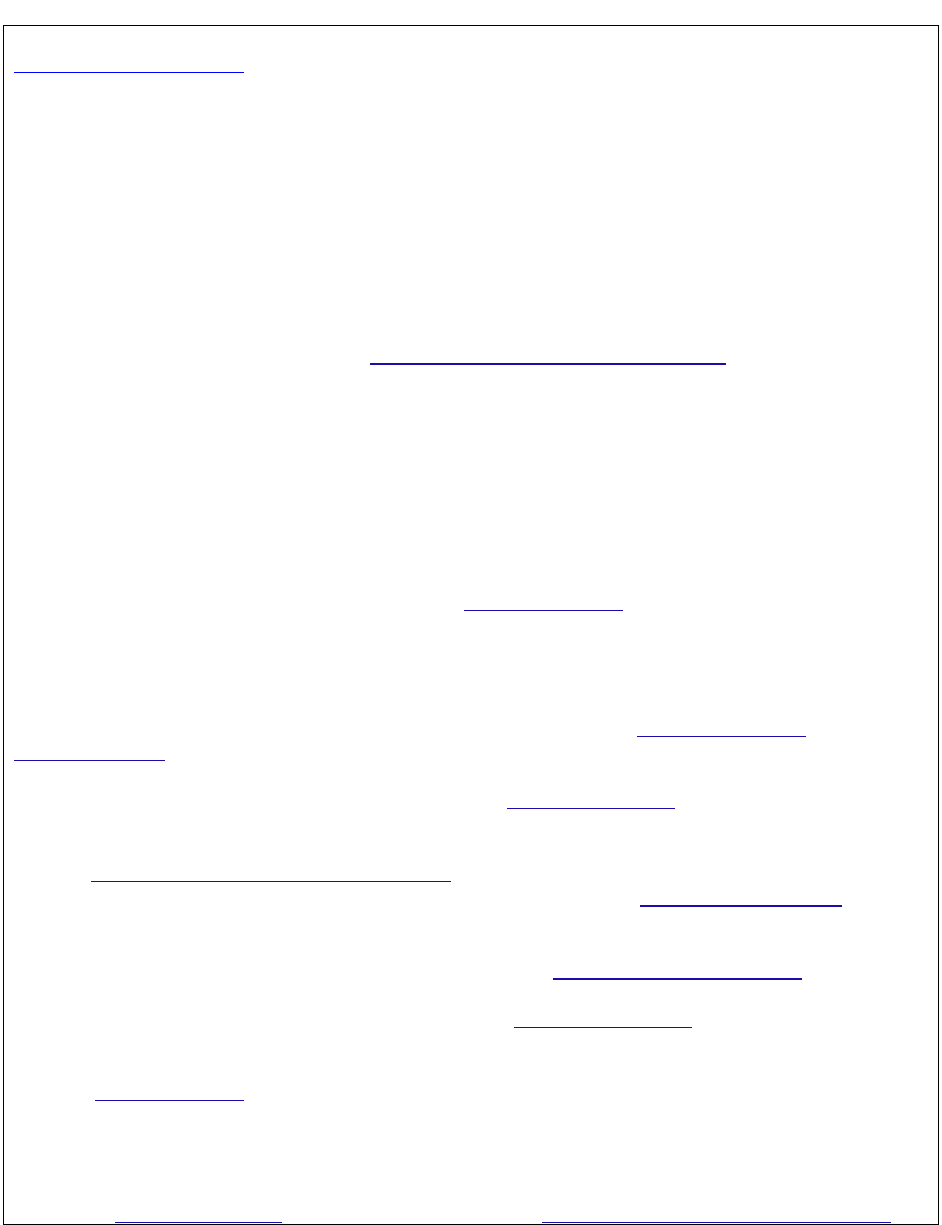
Motion for Summary Judgment - 20
Table 1: Motion for Summary Judgment or Motion to Strike
Larobina v. McDondald, 274 Conn. 394, 399-403, 876 A.2d 522 (2005). “We first address
the plaintiff's claim that a motion for summary judgment is an improper vehicle by which
to test the legal sufficiency of a complaint. ‘Practice Book [§ 17-49] provides that
summary judgment shall be rendered forthwith if the pleadings, affidavits and any other
proof submitted show that there is no genuine issue as to any material fact and that the
moving party is entitled to judgment as a matter of law. . . . In deciding a motion for
summary judgment, the trial court must view the evidence in the light most favorable to
the nonmoving party. . . . The party seeking summary judgment has the burden of
showing the absence of any genuine issue [of] material facts which, under applicable
principles of substantive law, entitle him to a judgment as a matter of law . . . and the
party opposing such a motion must provide an evidentiary foundation to demonstrate the
existence of a genuine issue of material fact. Practice Book [§ 17-46].’ (Citations omitted;
internal quotation marks omitted.) Witt v. St. Vincent's Medical Center, 252 Conn. 363,
368, 746 A.2d 753 (2000).
In contrast, ‘[a] motion to strike challenges the legal sufficiency of a pleading, and,
consequently, requires no factual findings by the trial court. . . . We take the facts to be
those alleged in the complaint . . . and we construe the complaint in the manner most
favorable to sustaining its legal sufficiency. . . . [I]f facts provable in the complaint would
support a cause of action, the motion to strike must be denied. . . . Thus, we assume the
truth of both the specific factual allegations and any facts fairly provable thereunder. In
doing so, moreover, we read the allegations broadly, rather than narrowly.’ (Citation
omitted; internal quotation marks omitted.) Craig v. Driscoll, 262 Conn. 312, 321, 813
A.2d 1003 (2002).
Our case law addressing the question of whether a motion for summary judgment may be
used instead of a motion to strike to challenge the legal sufficiency of a complaint and, if
so, under what circumstances, requires some clarification. In Boucher Agency,
Inc. v. Zimmer, 160 Conn. 404, 408-409, 279 A.2d 540 (1971), this court suggested
that, in light of the similarities between the procedures, the use of a motion for summary
judgment for such a purpose is proper. See also Pane v. Danbury, 267 Conn. 669, 674
n.7, 841 A.2d 684 (2004) (allowing use of motion for summary judgment to challenge
legal sufficiency of complaint when plaintiff did not raise objection in trial
court); Haynes v. Yale-New Haven Hospital, 243 Conn. 17, 32 n.17, 699 A.2d 964 (1997)
(treating motion for summary judgment as motion to strike); Hossan v. Hudiakoff, 178
Conn. 381, 382 n.1, 423 A.2d 108 (1970) (court declined to consider whether use of
motion for summary judgment instead of motion to strike was procedurally proper when
motion to strike properly would have been granted); Gaudino v. East Hartford, 87 Conn.
App. 353, 357-58, 865 A.2d 470 (2005) (motion for summary judgment may be used to
challenge legal sufficiency of complaint); but see Burke v. Avitabile, 32 Conn. App. 765,
772, 630 A.2d 624 (purpose of motion for summary judgment is not to test legal
sufficiency of complaint but to test for presence of contested factual issues), cert.
denied, 228 Conn. 908, 634 A.2d 297 (1993). We also have recognized, however, that
the use of a motion for summary judgment instead of a motion to strike may be unfair to
the nonmoving party because ‘[t]he granting of a defendant's motion for summary
judgment puts the plaintiff out of court . . . [while the] granting of a motion to strike
allows the plaintiff to replead his or her case.’ (Citation omitted; internal quotation marks
omitted.) Pane v. Danbury, supra, 674 n.7, quoting Rivera v. Double A Transportation,

Motion for Summary Judgment - 21
Inc., 248 Conn. 21, 38 n.3, 727 A.2d 204 (1999) (Berdon, J., dissenting);
cf. Kroll v. Steere, 60 Conn. App. 376, 384 n.6, 759 A.2d 541 (motion for summary
judgment may be treated as motion to strike when plaintiff did not claim that she should
have been allowed to replead), cert. denied, 255 Conn. 909, 763 A.2d 1035 (2000).
With these authorities in mind, we conclude that the use of a motion for summary
judgment to challenge the legal sufficiency of a complaint is appropriate when the
complaint fails to set forth a cause of action and the defendant can establish that the
defect could not be cured by repleading. See Boucher Agency, Inc. v. Zimmer, supra, 160
Conn. 410. If it is clear on the face of the complaint that it is legally insufficient and that
an opportunity to amend it would not help the plaintiff, we can perceive no reason why
the defendant should be prohibited from claiming that he is entitled to judgment as a
matter of law and from invoking the only available procedure for raising such a claim after
the pleadings are closed. See Practice Book § 10-7 (filing of answer constitutes waiver of
right to file motion to strike complaint). ‘It is incumbent on a plaintiff to allege some
recognizable cause of action in his complaint.. . . Thus, failure by the defendants to
demur to any portion of the . . . complaint does not prevent them from claiming that the
[plaintiff] had no cause of action and that a judgment [in favor of the defendants was]
warranted.’ (Citation omitted; internal quotation marks omitted.) Brill v. Ulrey, 159 Conn.
371, 374, 269 A.2d 262 (1970). Moreover, this court repeatedly ‘has recognized that the
desire for judicial efficiency inherent in the summary judgment procedure would be
frustrated if parties were forced to try a case where there was no real issue to be
tried.’ Fernandez v. Estate of Ayers, 56 Conn. App. 332, 334-35, 742 A.2d 836 (2000)
(citing cases).
In addition, we will not reverse the trial court's ruling on a motion for summary judgment
that was used to challenge the legal sufficiency of the complaint when it is clear that the
motion was being used for that purpose and the nonmoving party, by failing to object to
the procedure before the trial court, cannot demonstrate prejudice. A plaintiff should not
be allowed to argue to the trial court that his complaint is legally sufficient and then argue
on appeal that the trial court should have allowed him to amend his pleading to render it
legally sufficient. ‘Our rules of procedure do not allow a [party] to pursue one course of
action at trial and later, on appeal, argue that a path he rejected should now be open to
him. . . . To rule otherwise would permit trial by ambuscade.’ (Internal quotation marks
omitted.) State v. Reynolds, 264 Conn. 1, 207, 836 A.2d 224 (2003), cert. denied, 541
U.S. 908, 124 S. Ct. 1614, L. Ed. 2d 254 (2004).
In the present case, the plaintiff stated in his brief to the trial court that the defendants
were using the motion for summary judgment to challenge the legal sufficiency of his
complaint. He then argued that the complaint was legally sufficient. We conclude,
therefore, that he has waived any objection to the use of the motion for that purpose and
any claim that he should be permitted to replead. Moreover, it is clear that the plaintiff
has no further facts to allege that would cure the legal defects identified in this complaint.
Accordingly, we consider the merits of the trial court's determination that the complaint
was legally insufficient. ‘Because a motion to strike challenges the legal sufficiency of a
pleading and, consequently, requires no factual findings by the trial court, our review of
the court's ruling on the [defendants' motion] is plenary.’ (Internal quotation marks
omitted.) Commissioner of Labor v. C.J.M. Services, Inc., 268 Conn. 283, 292, 842 A.2d
1124 (2004).”
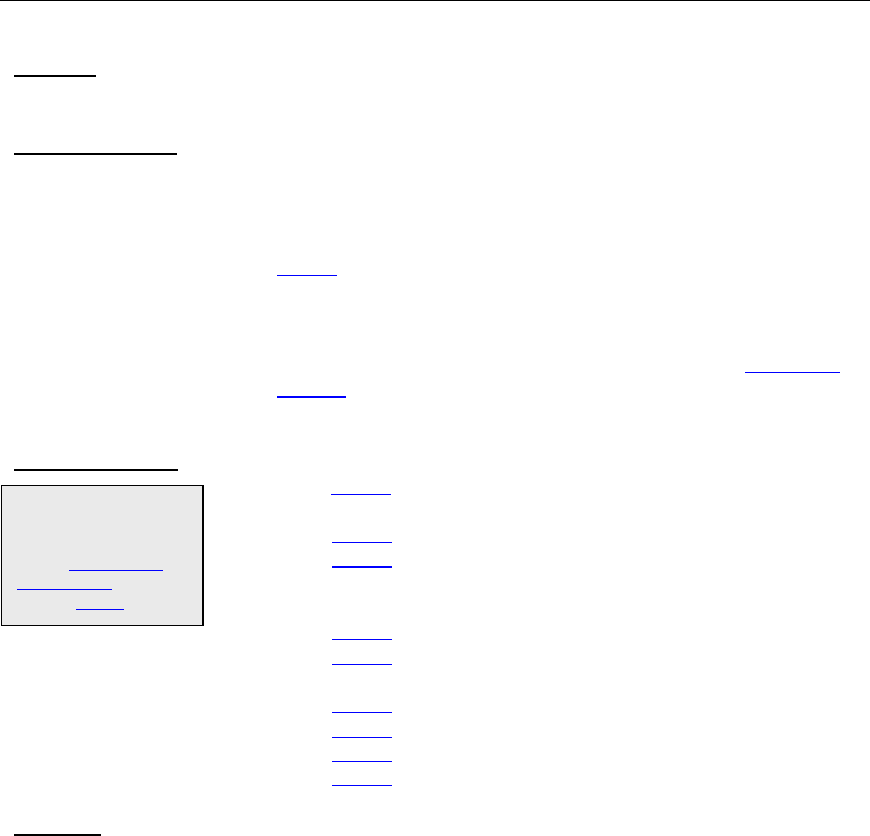
Motion for Summary Judgment - 22
Section 2: Objection to Motion for Summary
Judgment
A Guide to Resources in the Law Library
SCOPE:
Bibliographic resources relating to objections to motions for
summary judgment.
DEFINITIONS:
• “Unless otherwise ordered by the judicial authority, any
adverse party shall file and serve a response to the motion
for summary judgment within forty-five days of the filing of
the motion, including opposing affidavits and other
available documentary evidence.” Conn. Practice Book §
17-45(b) (2023).
• “A party opposing a motion for summary judgment must
provide an evidentiary foundation to demonstrate the
existence of a genuine issue of material fact.” Barlow v.
Palmer, 96 Conn. App. 88, 92, 898 A.2d 835, 837-38
(2006).
COURT RULES:
• Connecticut Practice Book (2023)
§ 11-10. Requirement That Memorandum of Law Be
Filed with Certain Motions.
§ 17-44. Summary Judgments; Scope of Remedy.
§ 17-45. --Proceedings upon Motion for Summary
Judgment; Request for Extension of Time to
Respond.
§ 17-46. --Form of Affidavits.
§ 17-47. --When Appropriate Documents Are
Unavailable
§ 17-48. --Affidavits Made in Bad Faith
§ 17-49. --Judgment
§ 17-50. --Triable Issue as to Damages Only
§ 17-51. --Judgment for Part of Claim
FORMS:
• LexisNexis Practice Guide: Connecticut Civil Pretrial Practice
Margaret P. Mason, editor, 2022 ed., LexisNexis.
Chapter 16. Summary Judgment
§ 16.24. Form: Opposition to Motion for Summary
Judgment
§ 16.25. Form: Affidavit in Support of Opposition to
Motion for summary Judgment
§ 16.26. Form: Reply in Support of Motion for
Summary Judgment
• 18 Connecticut Practice Series, Summary Judgment &
Related Termination Motions, by Erin Carlson, 2023 ed.,
Thomson West (Also available on Westlaw).
Chapter 3. Summary Judgment or Summary
Adjudication
VI. Sample Forms
Amendments to the
Practice Book (Court
Rules) are published
in the Connecticut
Law Journal and
posted online.

Motion for Summary Judgment - 23
§ 3:141. Sample supporting and opposition briefs —
Motion for summary judgment — Plaintiff's
opposition — Memorandum of points and authorities
in opposition to motion for summary judgment
§ 3:142. Sample supporting and opposition briefs -
Motion for summary judgment — Plaintiff's
opposition — Memorandum of points and authorities
in opposition to motion for partial summary
judgment — Negligent and intentional infliction of
emotional distress
§ 3:143. Sample supporting and opposition briefs —
Motion for summary judgment by defendant —
Plaintiff's opposition — Written objections to
evidence submitted in support of motion for
summary judgment
§ 3:144. Sample supporting and opposition briefs —
Motion for summary judgment by defendant —
Plaintiff's opposition — Reply memorandum in
support of motion — Dispute arising from supply of
municipal water to restaurant
• Civil Litigation in Connecticut: Anatomy of a Lawsuit, by
Kimberly A. Peterson, Prentice Hall, 1998.
Chapter 27. Motion for Summary Judgment
Example 2, Objection to Motion for Summary
Judgment Interlocutory in Character, p. 256.
• Library of Connecticut Employment Law Forms, Joseph D.
Garrison, editor, Connecticut Law Tribune, 2011.
Chapter 11. Summary Judgment.
11-002. Memo of Law in Opposition to Motion for
Summary Judgment – Wrongful Termination –
C.G.S. 31-51q
• Library of Connecticut Personal Injury Forms, 2nd ed.,
Joshua Koskoff, editor, Connecticut Law Tribune, 2014.
Chapter 6. Objection to Motions/Requests
6-012. Objection to Motion for Summary
Judgment—Statute of Limitations
6-013. Objection to Defendants Motion for
Summary Judgment
• Library of Connecticut Personal Injury Forms, 3d ed., Carey
B. Reilly, Connecticut Law Tribune, 2022.
Chapter 7. Pending Litigation
7-032. Summary Judgment, Objection to
CASE LAW:
• Squeo v. Norwalk Hosp. Ass'n, 316 Conn 558, 594, 113
A.3d 932 (2015). “As a general rule, then, ‘[w]hen a motion
for summary judgment is filed and supported by affidavits
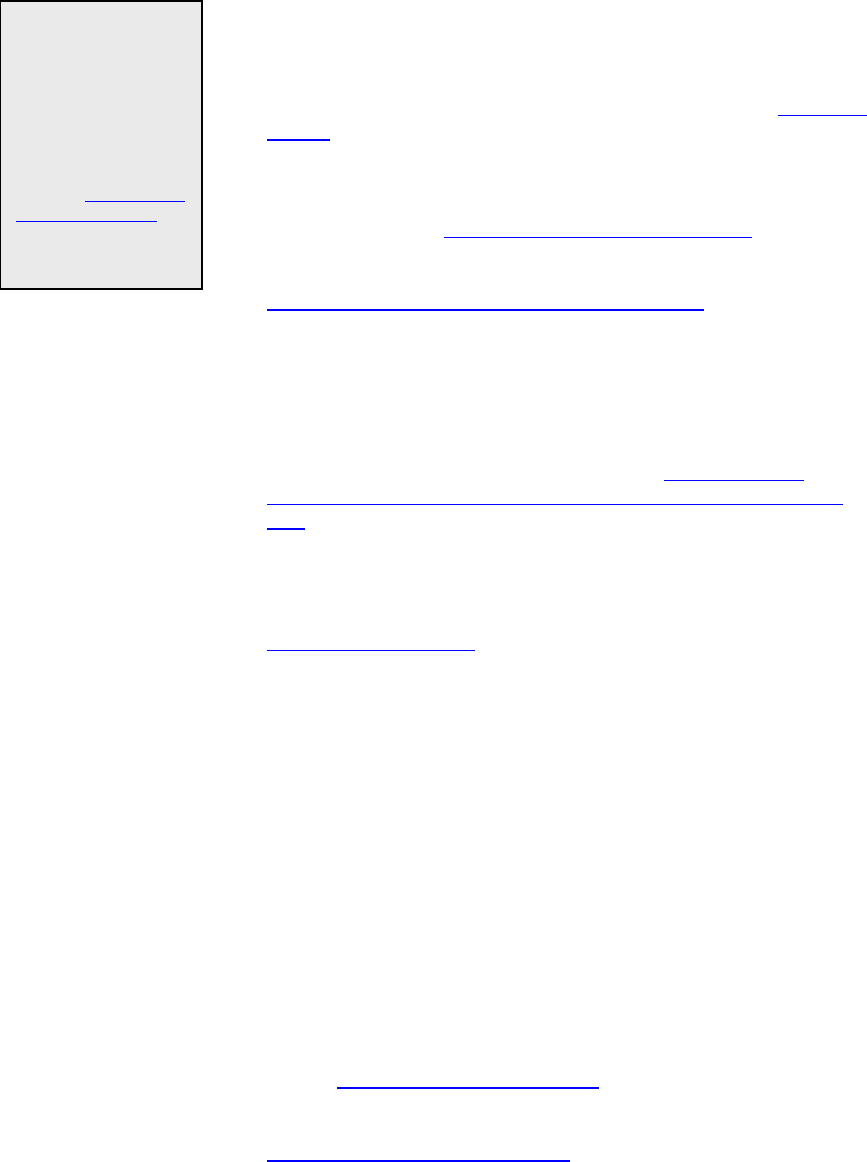
Motion for Summary Judgment - 24
and other documents, an adverse party, by affidavit or as
otherwise provided by ... [the rules of practice], must set
forth specific facts showing that there is a genuine issue for
trial, and if he does not so respond, summary judgment
shall be entered against him.’ (Footnote omitted.) Farrell v.
Farrell, 182 Conn. 34, 38, 438 A.2d 415 (1980). ‘Requiring
the nonmovant to produce such evidence does not shift the
burden of proof. Rather, it ensures that the nonmovant has
not raised a specious issue for the sole purpose of forcing
the case to trial.’ Great Country Bank v. Pastore, supra, 241
Conn. at 436.”
• RAB Performance Recoveries, LLC v. James, 151 Conn. App.
360, 366, 94 A.3d 1223 (2014). “Although the defendant
filed an objection to the motion for summary judgment in
which he argued that there was a genuine issue of material
fact as to the plaintiff's ownership of the debt, our rules of
procedure make clear that an unsworn and conclusory
assertion is insufficient to defeat a motion for summary
judgment. See Practice Book § 17–45; 2830 Whitney
Avenue Corp. v. Heritage Canal Development Associates,
Inc., 33 Conn. App. 563, 567, 636 A.2d 1377 (1994)
(‘existence of [a] genuine issue of material fact must be
demonstrated by counteraffidavits and concrete
evidence’).”
• Rockwell v. Quintner, 96 Conn. App. 221, 229, 899 A.2d
738 (2006). “An important exception exists, however, to
the general rule that a party opposing summary judgment
must provide evidentiary support for its opposition, and
that exception has been articulated in our jurisprudence
with less frequency than has the general rule. ‘On a motion
by [the] defendant for summary judgment the burden is on
[the] defendant to negate each claim as framed by the
complaint....’ 49 C.J.S. 365, Judgments § 261(b) (1997). It
necessarily follows that it is only ‘[o]nce [the] defendant's
burden in establishing his entitlement to summary
judgment is met [that] the burden shifts to [the] plaintiff to
show that a genuine issue of fact exists justifying a trial.’
49 C.J.S. 366, supra, § 261(b). Accordingly, ‘[w]hen
documents submitted in support of a motion for summary
judgment fail to establish that there is no genuine issue of
material fact, the nonmoving party has no obligation to
submit documents establishing the existence of such an
issue.’ Allstate Ins. Co. v. Barron, supra, 269 Conn. at 405,
848 A.2d 1165.”
• Inwood Condo. Ass'n v. Winer, 49 Conn. App. 694, 697,
716 A. 2d 139 (1998). “To oppose a motion for summary
judgment successfully, the nonmovant must recite specific
facts in accordance with Practice Book (1998 Rev.) § § 17–
45 and 17–46, formerly §§ 380 and 381, which contradict
those stated in the movant's affidavits and documents and
Once you have
identified useful
cases, it is important
to update the cases
before you rely on
them. Updating case
law means checking
to see if the cases
are still good law.
You can contact your
local law librarian to
learn about the tools
available to you to
update cases.

Motion for Summary Judgment - 25
show that there is a genuine issue for trial. If he does not
so respond, summary judgment shall be entered against
him. Farrell v. Farrell, 182 Conn. 34, 38, 438 A.2d 415
(1980); Rusco Industries, Inc. v. Hartford Housing
Authority, 168 Conn. 1, 5, 357 A.2d 484 (1975).”
WEST KEY
NUMBERS:
• 368H Summary Judgment
I. In General, k1-k10
II. Questions Considered on Summary Judgment, k11-k40
III. Grounds for Summary Judgment; Factors Considered,
k41-k70
IV. Ascertaining Whether Fact Issue Exists, k71-k100
V. Particular Cases and Contexts, k101-k270
VI. Proceedings, k271-k365
ENCYCLOPEDIAS:
• 73 Am. Jur. 2d Summary Judgment, Thomson West, 2023
(Also available on Westlaw).
I. In general
II. Actions, Matters, and Proceedings in Which
Authorized or Available
III. Application or Motion; Opposition; Effect of Failure
to Properly Support or Address Fact
A. Application or Motion
B. Opposition
2. Evidence in Support of Opposition
C. Establishing that Particular Fact is or Cannot be
Genuinely Disputed
IV. Determination; Governing Rules, Principles, and
Considerations
V. Scope of Relief; Order and Judgment
• 49 C.J.S. Judgments, Thomson West, 2021 (Also available
on Westlaw).
X. Judgment on Motion or Summary Proceedings
A. In general
B. Cases in Which Allowed
C. Proceedings on Motion for Summary Judgment
TEXTS &
TREATISES:
• LexisNexis Practice Guide: Connecticut Civil Pretrial Practice
Margaret P. Mason, editor, 2022 ed., LexisNexis.
Chapter 16. Summary Judgment
Part I: Statute and Rule Locator
Part II: Practical Guidance
§ 16.07. Filing and Serving Opposition to Motion
for Summary Judgment
§ 16.08. Filing and Serving Reply in Support of
Motion for Summary Judgment
§ 16.10. Submitting Affidavit in Support of
Motion, Opposition, or Reply
• 18 Connecticut Practice Series, Summary Judgment &
Related Termination Motions, by Erin Carlson, 2023 ed.,
Thomson West (Also available on Westlaw).
Encyclopedias and
ALRs are available in
print at some law
library locations and
accessible online at
all law library
locations.
Online databases are
available for
in-library use.
Remote access is not
available.
You can contact us
or visit our catalog
to determine which
of our law libraries
own the other
treatises cited or to
search for more
treatises.
References to online
databases refer to
in-library use of
these databases.
Remote access is not
available.

Motion for Summary Judgment - 26
Chapter 3. Summary Judgment or Summary
Adjudication
V. Key Opposition Citations
• 2 Dupont on Connecticut Civil Practice, by Ralph Dupont,
2022-2023 ed., LexisNexis.
Chapter 17. Judgments in General
G. Summary Judgments
• Civil Litigation in Connecticut: Anatomy of a Lawsuit, by
Kimberly A. Peterson, Prentice-Hall, 1998.
Chapter 27. Motion for Summary Judgment
• Pleadings and Pretrial Practice: A Deskbook for Connecticut
Litigator, by Jeanine M. Dumont, Connecticut Law Tribune,
1998 ed.
Chapter XI. Motion for Summary Judgment
5. Opposition to the Motion
• Stephenson’s Connecticut Civil Procedure, by Renee
Bevacqua Bollier, Atlantic Law Book Company, 1997, with
2014 supplement.
Chapter 9. Disposition Short of Trial.
100. Summary Judgment.
LAW REVIEWS:
• Corey M. Dennis, Roadmap to Connecticut Procedure,
Connecticut Bar Journal, Volume 83, Issue 4, 271 (2009).
Public access to law
review databases is
available on-site at
each of our law
libraries.

Motion for Summary Judgment - 27
Section 3: Affidavits and Documentary Proof
A Guide to Resources in the Law Library
SCOPE:
Bibliographic resources relating to affidavits and documentary
proof in support of motions for summary judgment.
DEFINITIONS:
• Standard for affidavits: “Supporting and opposing
affidavits shall be made on personal knowledge, shall set
forth such facts as would be admissible in evidence, and
shall show affirmatively that the affiant is competent to
testify to the matters stated therein. Sworn or certified
copies of all papers or part thereof referred to in an
affidavit shall be attached thereto.” Conn. Practice Book §
17-46 (2023).
• Affidavit: “…defined as any voluntary ex parte statement
reduced to writing, and sworn to or affirmed before some
person legally authorized to administer an oath or
affirmation.” Wiretek, Inc. v. J.M. Taraerin Enterprises, LLC,
Superior Court, Judicial District of Hartford, No. HHDX04-
CV06-6002110-S (May 25, 2010) (2010 WL 2593271)
(2010 Conn. Super. LEXIS 1243).
• “It is frequently stated in Connecticut's case law that,
pursuant to Practice Book §§ 17–45 and 17–46, a party
opposing a summary judgment motion ‘must provide an
evidentiary foundation to demonstrate the existence of a
genuine issue of material fact.’ Harvey v. Boehringer
Ingelheim Corp., 52 Conn. App. 1, 4, 724 A.2d 1143
(1999).” Rockwell v. Quintner, 96 Conn. App. 221, 228-
229, 899 A.2d 738 (2006).
• Personal knowledge: “‘is variously described as
knowledge acquired firsthand or from observation…’” Amos
Fin., LLC v. Ctr. for Advanced Pediatrics, P.C., Superior
Court, Judicial District of Stamford-Norwalk, No. CV11-
6011064-S (March 11, 2013) (2013 WL 1364714) (2013
Conn. Super. LEXIS 560).
STATUTES:
• Conn. Gen. Stat. (2023)
Chapter 901 - Damages, Costs and Fees
§ 52-245. False statement concerning defense. Costs.
COURT RULES:
• Connecticut Practice Book (2023)
§ 17-44. Summary Judgments; Scope of Remedy.
§ 17-45. --Proceedings upon Motion for Summary
Judgment; Request for Extension of Time to
Respond.
§ 17-46. --Form of Affidavits.
Amendments to the
Practice Book (Court
Rules) are published
in the Connecticut
Law Journal and
posted online.
You can visit your
local law library or
search the most
recent statutes and
public acts on the
Connecticut General
Assembly website.

Motion for Summary Judgment - 28
§ 17-47. --When Appropriate Documents Are
Unavailable
§ 17-48. --Affidavits Made in Bad Faith
§ 17-49. --Judgment
CODE OF
EVIDENCE:
• Official 2000 Connecticut Code of Evidence (2023 ed.)
§ 9-1. Requirement of Authentication
FORMS:
• LexisNexis Practice Guide: Connecticut Civil Pretrial Practice
Margaret P. Mason, editor, 2022 ed., LexisNexis.
Chapter 16. Summary Judgment
§ 16.23. Form: Affidavit in Support of Motion for
Summary Judgment
§ 16.25. Form: Affidavit in Support of Opposition to
Motion for summary Judgment
• 18 Connecticut Practice Series, Summary Judgment &
Related Termination Motions, by Erin Carlson, 2023 ed.,
Thomson West (Also available on Westlaw).
Chapter 3. Summary Judgment or Summary
Adjudication
VI. Sample Forms
3:139. Sample supporting and opposition
briefs — Motion for summary
judgment by defendant—Request for judicial
notice in support of motion for summary judgment
3:140. Sample supporting and opposition
briefs — Motion for summary judgment by
defendant—Affidavit in support of motion for
summary judgment
CASE LAW:
• Alvarez v. City of Middletown, 192 Conn. App. 606, 620,
218 A.3d 124 (2019). “As this court has observed, ‘to
defeat summary judgment . . . the plaintiff’s admissible
evidence must show circumstances that would be sufficient
to permit a rational finder of fact to infer that the
defendant’s employment decision was more likely than not
based in whole or in part on discrimination . . . .’ (Internal
quotation marks omitted.) Taing v. CAMRAC, LLC, supra,
189 Conn. App. 28. Because the plaintiff has not presented
such evidence, we conclude that the court properly
rendered summary judgment in favor of the defendant.”
• Magee Ave., LLC v. Lima Ceramic Tile, LLC, 183 Conn. App.
575, 584, 193 A.3d 700 (2018). “If mere assertions of fact
are insufficient to establish the existence of a material fact,
then they are insufficient to establish the lack of an
existence of material fact in the face of opposing evidence.
In essence, the plaintiff here was required to respond to
mere factual assertions with its own supporting affidavits
Once you have
identified useful
cases, it is important
to update the cases
before you rely on
them. Updating case
law means checking
to see if the cases
are still good law.
You can contact your
local law librarian to
learn about the tools
available to you to
update cases.

Motion for Summary Judgment - 29
and documentation before the defendant presented his
evidence in support of those assertions in the first place.
Considering that, under the rules of practice at the time of
the hearing, an adverse party was required to file its
evidence in opposition to a motion for summary judgment
at least five days before the hearing on the motion, we fail
to see how the defendant here should have been permitted
to file his initial affidavit in support of the motion one day
before the hearing. The defendant's affidavit therefore was
untimely and should not have been considered by the trial
court. Therefore, because the trial court should not have
considered the defendant's affidavit, the court improperly
rendered summary judgment in favor of the defendant.”
• Stuart v. Freiberg, 316 Conn. 809, 822, 116 A.3d 1195,
1204 (2015). “Specifically, the plaintiffs contend that,
following a determination that there were genuine disputes
over material facts bearing on other essential elements of
the counts of fraud and negligent misrepresentation⎯for
example, whether the defendant's financial statements
were false⎯’the trial court should have simply ceased its
analysis and denied summary judgment . . . .’ Thus, the
plaintiffs argue that it was improper for the trial court to
consider, in succession, whether any genuine issue of
material fact existed as to the essential element of reliance.
We disagree.”
“If a defendant's well supported motion for summary
judgment shows that there is no genuine factual dispute as
to multiple essential elements of a plaintiff's cause of
action, such that none of them reasonably could be
resolved in the plaintiff's favor at trial, the viability of that
plaintiff's case is not improved if he only responds with
sufficient counterevidence to call some of those essential
elements back into question. Put differently, by raising a
genuine issue of fact as to only some of the essential
elements under attack, the plaintiff has not altered the
potential outcome of his case. See Santopietro v. New
Haven, supra, 239 Conn. 225. It logically follows that, in
evaluating a defendant's motion for summary judgment, a
trial court's task does not necessarily end upon its finding
that a genuine factual dispute exists as to one or some
essential elements of a plaintiff's cause of action. If a
defendant has substantively addressed additional essential
elements in support of his motion, so too should the trial
court in determining whether summary judgment is
appropriate.” (p. 823)
• Mott v. Wal-Mart Stores East, LP, 139 Conn. App. 618, 632,
57 A.3d 391, 397 (2012). “‘A motion for summary
judgment is properly granted if it raises at least one legally
sufficient defense that would bar the plaintiff's claim and
involves no triable issue of fact.’ (Internal quotation marks
Once you have
identified useful
cases, it is important
to update the cases
before you rely on
them. Updating case
law means checking
to see if the cases
are still good law.
You can contact your
local law librarian to
learn about the tools
available to you to
update cases.

Motion for Summary Judgment - 30
omitted.) Lunn v. Cummings & Lockwood, 56 Conn. App.
363, 370, 743 A.2d 653 (2000). The submissions provided
by the defendant in support of its motion for summary
judgment cannot be viewed properly as removing the issue
of notice as a triable issue of fact in the present case. The
court's statement to the contrary is clearly erroneous.
Accordingly, because the defendant failed to meet its
evidentiary burden, the plaintiff was entitled to a denial of
the defendant's motion for summary judgment, and it was
not legally or logically correct for the court to have granted
the motion for summary judgment on the basis that the
plaintiff had failed to file an opposing affidavit or other
supporting documents with its opposition to summary
judgment.”
• Taylor v. Barberino, 136 Conn. App. 283, 289, 44 A.3d 875,
878 (2012). “As this court has observed, ‘[o]nly evidence
that would be admissible at trial may be used to support or
oppose a motion for summary judgment’ United Services
Automobile Assn. v. Marburg, 46 Conn.App. 99, 110, 698
A.2d 914 (1997). The affidavits of Draskinis and Sgambati,
in particular, plainly do not contain statements based on
personal knowledge, as required under Practice Book § 17–
46. Indeed, with respect to Draskinis, the court found, and
we agree, that ‘much of what is sworn to ... does [not]
constitute facts that would be admissible at trial. Rather,
much of the document consists of [statements] about
matters which he has only learned of through reviews of
deposition testimony, and offering statements that sound
more like legal arguments than statements of fact.’”
• Baldwin v. Curtis, 105 Conn. App. 844, 852, 939 A.2d
1249, 1254 (2008). “As the defendant's evidence failed to
negate a genuine issue of material fact, the plaintiff was not
obligated to submit documents establishing the existence of
such an issue. See Rockwell v. Quintner, supra, 96
Conn.App. at 228, 899 A.2d 738 (defendant's evidence
failed to ‘[exclude] any real doubt as to the existence of
any genuine issue of material fact’). Having failed to negate
a genuine issue of material fact, the defendant did not meet
her burden of establishing that, as a matter of law,
summary judgment should have been rendered in her
favor.”
• City of New Haven v. Pantani, 89 Conn. App. 675, 679, 874
A. 2d 849 (2005). “Therefore, before a document may be
considered by the court in support of a motion for summary
judgment, ‘there must be a preliminary showing of [the
document's] genuineness, i.e., that the proffered item of
evidence is what its proponent claims it to be. The
requirement of authentication applies to all types of
evidence, including writings ....’ Conn.Code Evid. § 9-1(a),
commentary. Documents in support of or in opposition to a

Motion for Summary Judgment - 31
motion for summary judgment may be authenticated in a
variety of ways, including, but not limited to, a certified
copy of a document or the addition of an affidavit by a
person with personal knowledge that the offered evidence is
a true and accurate representation of what its proponent
claims it to be. In this case, the plaintiff submitted
numerous exhibits in support of its motion for summary
judgment. The plaintiff failed, however, either to attach an
affidavit attesting to the truth and accuracy of the various
submissions or to provide certified copies of any of the
documents.”
• Barasso v. Rear Still Hill Road, LLC, et al., 81 Conn. App.
798, 803, 842 A.2d 1134 (2004). “The defendants claim
that the McMahon affidavit, submitted in opposition to the
plaintiff's motion for summary judgment, raised genuine
issues of material fact. ‘[A]ffidavits filed in connection with
a motion for summary judgment must be made on personal
knowledge, must set forth facts which would be admissible
in evidence, and must show that the affiant is competent to
testify to all matters stated in the affidavit. . . . Mere
statements of legal conclusions or that an issue of fact does
exist are not sufficient to raise the issue.’ (Citations
omitted; internal quotation marks omitted.) United Oil Co.
v. Urban Redevelopment Commission, 158 Conn. 364, 377,
260 A.2d 596 (1969). Our review of the record persuades
us that the McMahon affidavit satisfies that standard.”
• Paine Webber Jackson & Curtis, Inc. v. Winters, 13 Conn.
App. 712, 721, 539 A.2d 595 (1988). “Pleadings per se do
not constitute documentary proof under § 380. Allegations
of pleadings not admitted by a party are not proof of their
contents. They merely set forth the cause of action and the
issues of fact and law raised in the pleadings. The
framework of the case is built by the pleadings. Unadmitted
allegations of pleadings do not constitute documentary
proof of the existence of a genuine issue as to any material
fact on a motion for summary judgment. The quantum of
evidentiary proof admissible at trial relevant to these
allegations, or any later amendment of them, is not
documentary proof under § 380 probative of, or relevant to,
the grant or denial of summary judgment. The court's
consideration of a motion for summary judgment is limited
to the evaluation as a matter of law of the documentary
proof submitted under § 380. Additionally, in passing upon
a motion for summary judgment, the trial court must view
the documentary proof in the light most favorable to the
nonmovant. Rawling v. New Haven, supra; Strada v.
Connecticut Newspapers, Inc., 193 Conn. 313, 317, 477
A.2d 1005 (1984); Town Bank & Trust Co. v. Benson,
supra, 176 Conn. at 309, 407 A.2d 971; United Oil Co. v.
Urban Redevelopment Commission, supra, 158 Conn. at
380, 260 A.2d 596.”

Motion for Summary Judgment - 32
• Town of Brookfield v. Candlewood Shores Estates, Inc., 201
Conn. 1, 7, 513 A.2d 1218 (1986). “We turn now to the
defendant's claim that the Brookfield tax collector's affidavit
supporting the summary judgment motion included, in
violation of Practice Book § 381..., evidence that would
have been inadmissable at trial and, therefore, should not
have been considered by the trial court in deciding the
motion. This claim is without merit.
The plaintiff attached to its motion for summary judgment,
inter alia, the affidavit of Theresa York, the Brookfield tax
collector, dated December 11, 1984. York's affidavit, after
setting out that she was ‘duly sworn [and] depose[d],’
recites that she was the tax collector of Brookfield and "as
such, [was] familiar with the subject matter of [this] suit....
York's affidavit comports with the requisites of an affidavit;
it is a written statement taken under oath before an
authorized officer. 2A C.J.S., Affidavits § 2; 3 Am. Jur. 2d,
Affidavits § 1; see generally State v. Wolfe, 156 Conn. 199,
205, 239 A.2d 509 (1968). Generally speaking, affidavits
are used for, and should contain, a presentation of facts by
a person having knowledge of those facts, and the facts
recited must be those requisite to establish the principal
facts sought to be maintained. See 2A C.J.S., Affidavits §
43. Specifically, as to summary judgment, ‘[s]upporting
and opposing affidavits ‘shall be made on personal
knowledge, shall set forth such facts as would be admissible
in evidence, and shall show affirmatively that the affiant is
competent to testify to the matters stated therein.’ Practice
Book § 381[.]...
The operative facts stated by York in her affidavit, which
encompasses the exhibits attached, are matters within her
personal knowledge as the tax collector of Brookfield. Her
affidavit specifically recites that, as the tax collector, she is
‘familiar with the subject matter of [this] suit.’ It is
recognized that ‘[a]n affidavit may be used to introduce
documentary or other written proof, and in that event such
written materials should be attached to the affidavit or
served with it’ as they were in this case. 6 Moore, Federal
Practice (2d Ed.) ¶ 56.11[1.-2], p. 56-200; see 3 Am. Jur.
2d, Affidavits § 20. If, as one court has said, ‘[a]n affidavit
should set forth the factual picture by a person who knows
the facts’; People v. Mirasola, 35 Misc. 2d 886, 887, 231
N.Y.S.2d 645 (1962); the York affidavit does so.”
WEST KEY
NUMBERS:
• 368H Summary Judgment
I. In General, k1-k10
II. Questions Considered on Summary Judgment, k11-k40
III. Grounds for Summary Judgment; Factors Considered,
k41-k70
IV. Ascertaining Whether Fact Issue Exists, k71-k100

Motion for Summary Judgment - 33
V. Particular Cases and Contexts, k101-k270
VI. Proceedings, k271-k365
ENCYCLOPEDIAS:
• 73 Am. Jur. 2d Summary Judgment, Thomson West, 2023
(Also available on Westlaw).
I. In general
II. Actions, Matters, and Proceedings in Which
Authorized or Available
III. Application or Motion; Opposition; Effect of Failure
to Properly Support or Address Fact
A. Application or Motion
3. Contents of and Support for Motion
B. Opposition
2. Evidence in Support of Opposition
C. Establishing that Particular Fact is or Cannot be
Genuinely Disputed
IV. Determination; Governing Rules, Principles, and
Considerations
V. Scope of Relief; Order and Judgment
• 49 C.J.S. Judgments, Thomson West, 2021 (Also available
on Westlaw).
X. Judgment on Motion or Summary Proceedings
A. In general
B. Cases in Which Allowed
C. Proceedings on Motion for Summary Judgment
TEXTS &
TREATISES:
• LexisNexis Practice Guide: Connecticut Civil Pretrial
Practice, Margaret P. Mason, editor, 2022 ed., LexisNexis.
Chapter 16. Summary Judgment
Part I: Statute and Rule Locator
Part II: Practical Guidance
§ 16.10. Submitting Affidavit in Support of Motion,
Opposition, or Reply
• 18 Connecticut Practice Series, Summary Judgment &
Related Termination Motions, by Erin Carlson, 2023 ed.,
Thomson West (Also available on Westlaw).
Chapter 3. Summary Judgment or Summary
Adjudication
• 2 Dupont on Connecticut Civil Practice, by Ralph Dupont,
2022-2023 ed., LexisNexis.
Chapter 17. Judgments
G. Summary Judgments
§ 17-45. Proceedings Upon Motion for Summary
Judgment; Request for Extension of Time to
Respond
§ 17-45.3 Supporting Documents; Unsworn
Statements and Reports Prohibited.
§ 17-46. Form of Affidavits [On Motion for
Summary Judgment]
Each of our law
libraries own the
Connecticut treatises
cited. You can
contact us or visit
our catalog to
determine which of
our law libraries own
the other treatises
cited or to search for
more treatises.
References to online
databases refer to
in-library use of
these databases.
Remote access is not
available.
Encyclopedias and
ALRs are available in
print at some law
library locations and
accessible online at
all law library
locations.
Online databases are
available for
in-library use.
Remote access is not
available.

Motion for Summary Judgment - 34
§ 17-46.1 Affidavit, Facts Alleged Must be
Admissible and Based on Affiant’s Personal
Knowledge.
§ 17-46.2 Affidavit, Failure to File.
§ 17-47. When Appropriate Documents are
Unavailable
§ 17-47.1 Summary Judgment Motion,
Continuance or Denial Until Opponent’s Discovery
Completed
§ 17-48. Affidavits Made in Bad Faith
§ 17-48.1 Contempt; Discipline, Bad Faith
Affidavit
• Civil Litigation in Connecticut: Anatomy of a Lawsuit, by
Kimberly A. Peterson, Prentice Hall, 1998.
Chapter 27. Motion for Summary Judgment
• Pleadings and Pretrial Practice: A Deskbook for Connecticut
Litigators, by Jeanine M. Dumont, Connecticut Law
Tribune, 1998 ed.
Chapter XI. Motion for Summary Judgment
3. The Mechanics of a Motion for Summary
Judgment
• Stephenson’s Connecticut Civil Procedure, by Renee
Bevacqua Bollier, Atlantic Law Book Company, 1997, with
2014 supplement.
Chapter 9. Disposition Short of Trial
§ 100. Summary Judgment
• Connecticut Trial Evidence Notebook, Second Edition, Dale
P. Faulkner, et. al., LexisNexis, 2022.
Affidavits
LAW REVIEWS:
• James A. Fulton, Succeeding by Summary Judgment: Is It
Time to Recognize the Sham Affidavit Rule in the State
Courts in Connecticut?, Connecticut Lawyer, Volume 26,
Issue 2, 23 (2015)
• Corey M. Dennis, Roadmap to Connecticut Procedure,
Connecticut Bar Journal, Volume 83, Issue 4, 271 (2009).
Public access to law
review databases is
available on-site at
each of our law
libraries.
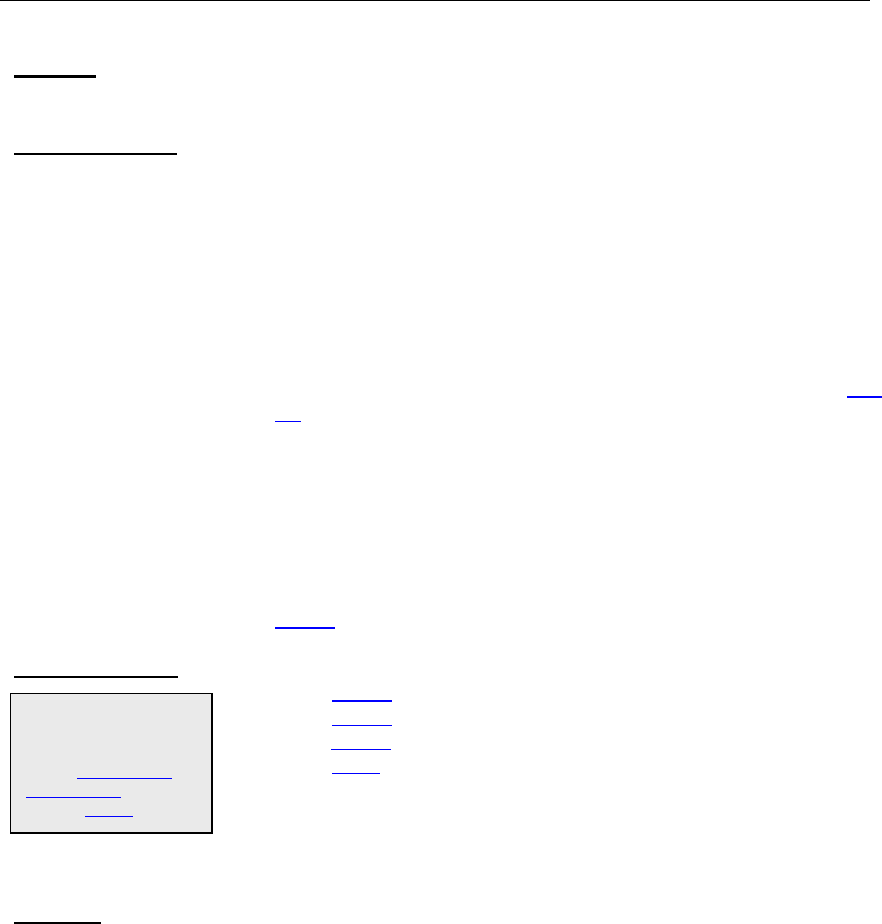
Motion for Summary Judgment - 35
Section 4: Partial Summary Judgment
A Guide to Resources in the Law Library
SCOPE:
Bibliographic resources relating to partial (interlocutory)
summary judgment as to liability only.
DEFINITIONS:
• Partial Summary Judgment: “A summary judgment,
interlocutory in character, may be rendered on the issue of
liability alone, although there is a genuine issue as to
damages. In such case the judicial authority shall order an
immediate hearing before a judge trial referee, before the
court, or before a jury, whichever may be proper, to
determine the amount of the damages. If the determination
is by a jury, the usual procedure for setting aside the
verdict shall be applicable. Upon the conclusion of these
proceedings, the judicial authority shall forthwith render the
appropriate summary judgment.” Conn. Practice Book § 17-
50 (2023).
• Judgment for Part of Claim: “If it appears that the
defense applies to only part of the claim, or that any part is
admitted, the moving party may have final judgment
forthwith for so much of the claim as the defense does not
apply to, or as is admitted, on such terms as may be just;
and the action may be severed and proceeded with as
respects the remainder of the claim.” Conn. Practice Book §
17-51 (2023).
COURT RULES:
• Connecticut Practice Book (2023)
§ 17-44. Summary Judgments; Scope of Remedy.
§ 17-50. --Triable Issue as to Damages Only
§ 17-51. --Judgment for Part of Claim
§ 61-4. Appeal of Judgment that Disposes of at Least
One Cause of Action while Not Disposing of Either
(1) An Entire Complaint, Counterclaim or Cross
Complaint, or (2) All the Causes of Action in a
Pleading Brought by or against a Party
FORMS:
• 2 Connecticut Practice Series, Connecticut Civil Practice
Forms, 4th ed., by Joel M. Kaye et al., Thomson West,
2004, with 2022 supplement (Also available on Westlaw).
107.14. Interlocutory Summary Judgment
• 18 Connecticut Practice Series, Summary Judgment &
Related Termination Motions, by Erin Carlson, 2023 ed.,
Thomson West (Also available on Westlaw).
Chapter 3. Summary Judgment or Summary
Adjudication
§ 3:137. Motion for summary judgment by
defendant — Memorandum of points and
authorities in support of motion for partial
summary judgment — Negligent and intentional
Amendments to the
Practice Book (Court
Rules) are published
in the Connecticut
Law Journal and
posted online.

Motion for Summary Judgment - 36
infliction of emotional distress
§ 3:138. Motion for summary judgment by
defendant — Memorandum of points and
authorities in support of motion for partial
summary judgment — Provision — No basis for
tolling statute of limitations as to CUTPA claim.
§ 3:142. Motion for summary judgment —
Plaintiff's opposition — Memorandum of points and
authorities in opposition to motion for partial
summary judgment — Negligent and intentional
infliction of emotional distress
• Civil Litigation in Connecticut: Anatomy of a Lawsuit, by
Kimberly A. Peterson, Prentice Hall, 1998.
Chapter 27. Motion for Summary Judgment
Example 1, Motion for Summary Judgment
Interlocutory in Character, with Respect to
Liability, p.255.
CASE LAW:
• Ciccarelli v. Ciccarelli, 194 Conn. App. 335, 337-338, 221
A.3d 95 (2019). “On August 10, 2018, the defendant filed
another appeal from the partial summary judgment
rendered by the trial court on April 23, 2018. . . In
response, the plaintiff maintains that the defendant has not
appealed from a final judgment, thereby depriving this
court of subject matter jurisdiction. We agree.
‘. . . It is undisputed that the partial summary judgment
that the court entered on April 23, 2018, did not dispose of
all causes of action against the defendant, as the second
count seeking an accounting pursuant to § 52-404 (b)
remained pending. In addition, the defendant has not
requested a written determination from the trial court
regarding the significance of the issues resolved by the
partial summary judgment entered against him.
As a result, the defendant could appeal from the partial
summary judgment ‘only if the remaining causes of action
or claims for relief [were] withdrawn or unconditionally
abandoned before the appeal [was] taken.’ Meribear
Productions, Inc. v. Frank, 328 Conn. 709, 717, 183 A.3d
1164 (2018).”
• Wahba v. J & J Blasting Corp., Superior Court, Judicial
District of Stamford-Norwalk, No. CV14-6020764-S (Nov. 4,
2014) (59 Conn. L. Rptr. 267) (2014 WL 6996849) (2014
Conn. Super. LEXIS 2754). “‘There is no appellate authority
and a split among Superior Court authority as to whether it
is proper to excise only certain allegations of a count
through summary judgment when such judgment would not
dispose of a discrete cause of action.’ Trungadi v. Mauer,
Once you have
identified useful
cases, it is important
to update the cases
before you rely on
them. Updating case
law means checking
to see if the cases
are still good law.
You can contact your
local law librarian to
learn about the tools
available to you to
update cases.
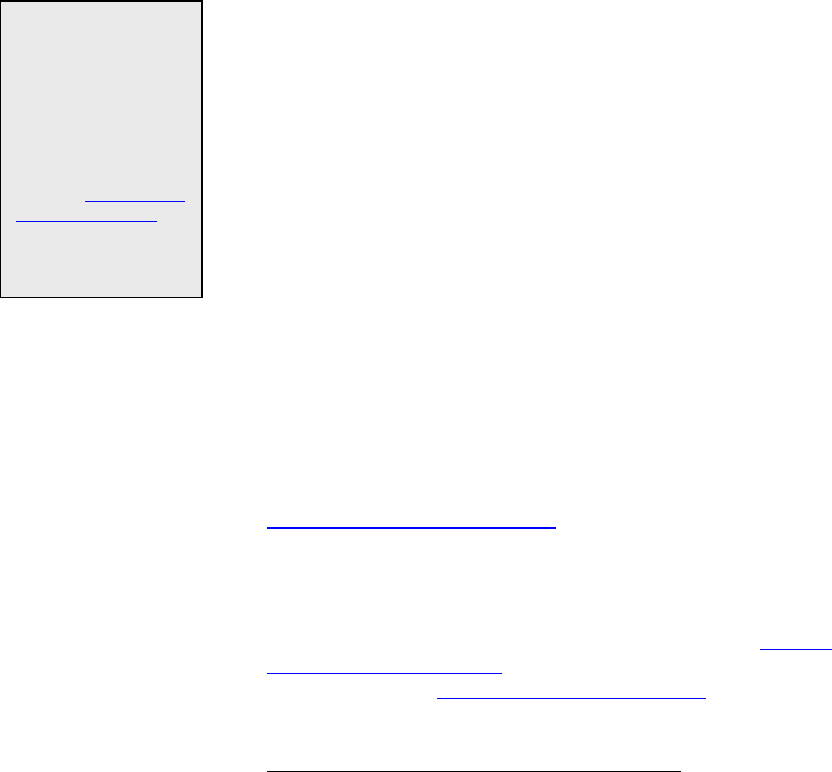
Motion for Summary Judgment - 37
Superior Court, judicial district of Fairfield, Docket No. CV–
07–5008732–S (November 21, 2011, Bellis, J.) [53 Conn.
L. Rptr. 9]. On one hand, some courts have granted partial
summary judgment as to certain specifications of a cause of
action contained within a single count, if it appears illogical
to retain those specifications when they cannot ultimately
succeed. Mazurek v. Great American Insurance Company,
Inc., Superior Court, judicial district of Waterbury, Complex
Litigation Docket, Docket No. X02–CV–01–0177433–S
(December 16, 2004, Schuman, J.) (38 Conn. L. Rptr. 402)
(denying re-argument of a grant of summary judgment on
fifty-one of the fifty-four specifications in a negligence
count), aff'd in part and appeal dismissed in part, 284
Conn. 16 (2007). Other courts have stated, ‘[s]ummary
judgment is unavailable as to particular allegations in a
count when such an adjudication does not dispose of an
entire cause of action...’ Shelton Yacht & Cabana Club, Inc.
v. Voccola, Superior Court, judicial district of Ansonia–
Milford, Docket No. CV–01–0075380–S (February 2, 2007,
Stevens, J.).
• GMAC Mortgage, LLC v. Ford, 144 Conn. App. 165, 176, 73
A.3d 742, 751 (2013). “Thus, a court may properly grant
summary judgment as to liability in a foreclosure action if
the complaint and supporting affidavits establish an
undisputed prima facie case and the defendant fails to
assert any legally sufficient special defense. See LaSalle
National Bank v. Shook, 67 Conn. App. 93, 96–97, 787
A.2d 32 (2001); Union Trust Co. v. Jackson, 42 Conn. App.
413, 417, 679 A.2d 421 (1996).”
• Pfizer, Inc. v. Mine Safety Appliances Co., Superior Court,
Judicial District of Hartford, No. CV04-4034705S, (May 19,
2008) (45 Conn. L. Rptr. 577) (2008 WL 2314196) (2008
Conn. Super. LEXIS 1239). “While there still appears to be
no definitive appellate authority and there continues to be a
split in the Superior Court, ‘the majority of the cases do not
allow a party to eliminate some, but not all, of the
allegations of a single count through a motion for summary
judgment.’ (Footnote omitted.) Snodgrass v. Mulhearn,
Superior Court, judicial district of New Britain at New
Britain, Docket No. HHB CV 03 0523029 (May 18, 2006,
Shaban, J.) (noting absence of appellate authority and
collecting cases). A recent explanation stated, ‘the majority
rule ... is that Connecticut procedure does not allow entry
of summary judgment on one part or allegation of a cause
of action when the ruling will not dispose of an entire claim,
and therefore, will not allow entry of judgment on that
claim. See generally Practice Book § 17–51.’ (Footnote
omitted.) Bridgeport Harbor Place I, LLC v. Ganim, Superior
Court, judicial district of Waterbury, Complex Litigation
Docket at Waterbury, Docket No. X06 CV 04 0184523
(October 5, 2007, Stevens, J.).”
Once you have
identified useful
cases, it is important
to update the cases
before you rely on
them. Updating case
law means checking
to see if the cases
are still good law.
You can contact your
local law librarian to
learn about the tools
available to you to
update cases.

Motion for Summary Judgment - 38
• Psaki v. Karlton, 97 Conn. App. 64, 70, 903 A.2d 224
(2006). “First, the judgment of the court did not dispose of
all causes of action brought by the parties. In fact, the
judgment did not even dispose of the breach of contract
claim. Second, neither the trial court nor this court made
any written determination pursuant to Practice Book § 61-
4(a) regarding the significance of the issues presented in
this case. Moreover, Practice Book § 61-4(a) is not
applicable because it ‘applies to a trial court judgment that
disposes of at least one cause of action....’ Here, it is
without question that the court's judgment does not
dispose of at least one cause of action. Accordingly, we
conclude that this appeal does not fall within either rule
permitting an appeal from a judgment on less than all
counts of the complaint.”
WEST KEY
NUMBERS:
• 368H Summary Judgment
I. In General, k1-k10
II. Questions Considered on Summary Judgment, k11-k40
III. Grounds for Summary Judgment; Factors Considered,
k41-k70
IV. Ascertaining Whether Fact Issue Exists, k71-k100
V. Particular Cases and Contexts, k101-k270
VI. Proceedings, k271-k365
ENCYCLOPEDIAS:
• 73 Am. Jur. 2d Summary Judgment, Thomson West, 2023
(Also available on Westlaw).
I. In general
II. Actions, Matters, and Proceedings in Which
Authorized or Available
III. Application or Motion; Opposition; Effect of Failure
to Properly Support or Address Fact
IV. Determination; Governing Rules, Principles, and
Considerations
V. Scope of Relief; Order and Judgment
B. Complete or Partial Summary Judgment;
Limitation of Issues
• 49 C.J.S. Judgments, Thomson West, 2021 (Also available
on Westlaw).
X. Judgment on Motion or Summary Proceedings
A. In general
B. Cases in Which Allowed
C. Proceedings on Motion for Summary Judgment
TEXTS &
TREATISES:
• LexisNexis Practice Guide: Connecticut Civil Pretrial
Practice, Margaret P. Mason, editor, 2022 ed., LexisNexis.
Chapter 16. Summary Judgment
Part I: Statute and Rule Locator
Part II: Practical Guidance
§ 16.04. Partial Summary Judgment is Permitted
Encyclopedias and
ALRs are available in
print at some law
library locations and
accessible online at
all law library
locations.
Online databases are
available for
in-library use.
Remote access is not
available.

Motion for Summary Judgment - 39
• 18 Connecticut Practice Series, Summary Judgment &
Related Termination Motions, by Erin Carlson, 2023 ed.,
Thomson West, (Also available on Westlaw).
Chapter 3. Summary Judgment or Summary
Adjudication
§ 3:19 Partial summary judgment⎯Authority
• 2 Dupont on Connecticut Civil Practice, by Ralph Dupont,
2022-2023 ed., LexisNexis.
Chapter 17. Judgments
G. Summary Judgments
§ 17-50. Triable Issue as to Damages Only [On
Motion for Summary Judgment]
§ 17-51. Judgment for Part of Claim [Partial
Summary Judgment]
• Civil Litigation in Connecticut: Anatomy of a Lawsuit by
Kimberly A. Peterson, Prentice Hall, 1998.
Chapter 27. Motion for Summary Judgment
• Pleadings and Pretrial Practice: A Deskbook for Connecticut
Litigators, by Jeanine M. Dumont, Connecticut Law Tribune,
1998 ed.
Chapter XI. Motion for Summary Judgment
• Stephenson’s Connecticut Civil Procedure, by Renee
Bevacqua Bollier, Atlantic Law Book Company, 1997, with
2014 supplement.
Chapter 9. Disposition Short of Trial.
§ 100. Summary Judgment.
LAW REVIEWS:
• Corey M. Dennis, Roadmap to Connecticut Procedure,
Connecticut Bar Journal, Volume 83, Issue 4, 271 (2009).
Public access to law
review databases is
available on-site at
each of our law
libraries.
Each of our law
libraries own the
Connecticut treatises
cited. You can
contact us or visit
our catalog to
determine which of
our law libraries own
the other treatises
cited or to search for
more treatises.
References to online
databases refer to
in-library use of
these databases.
Remote access is not
available.
